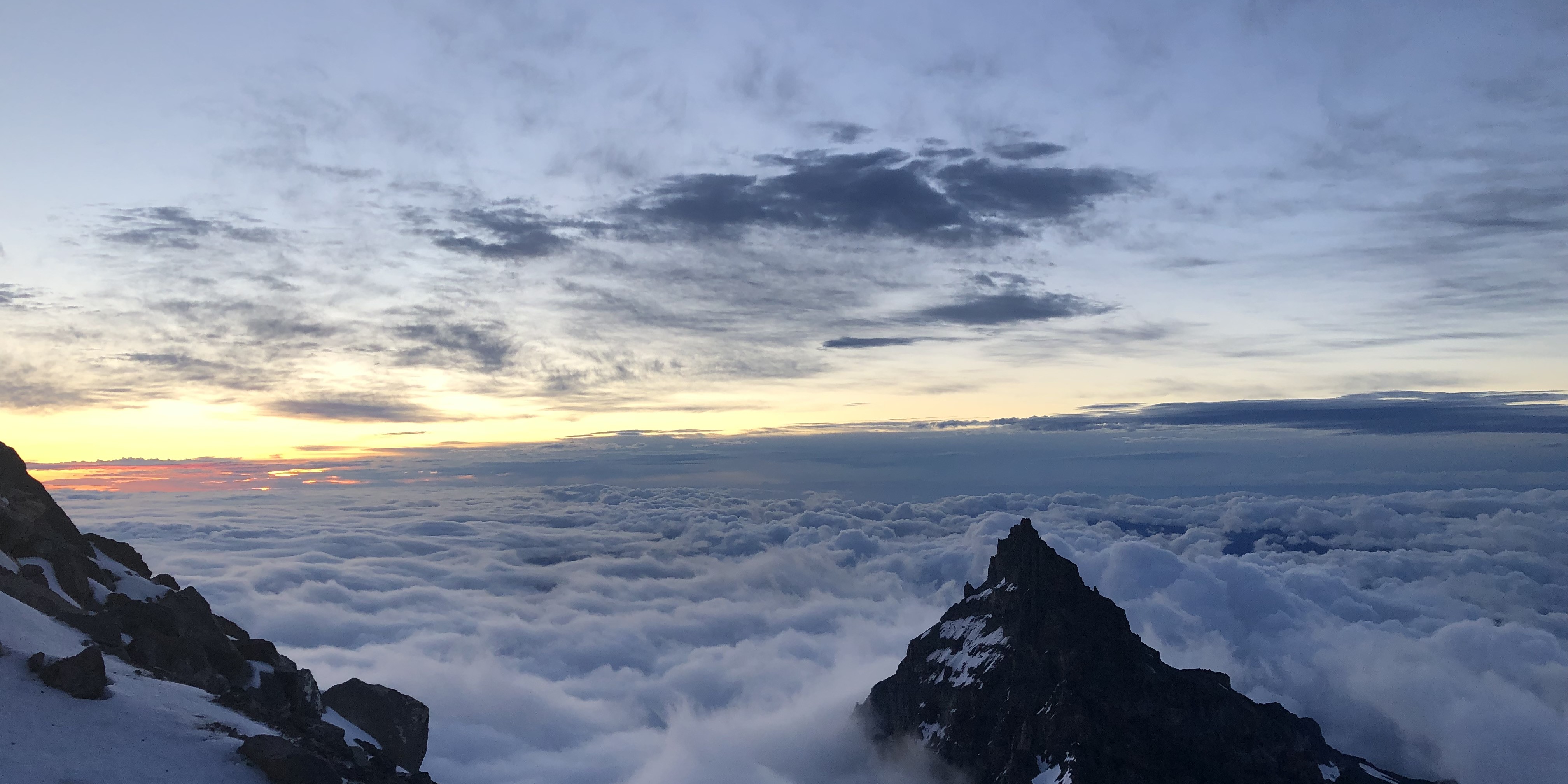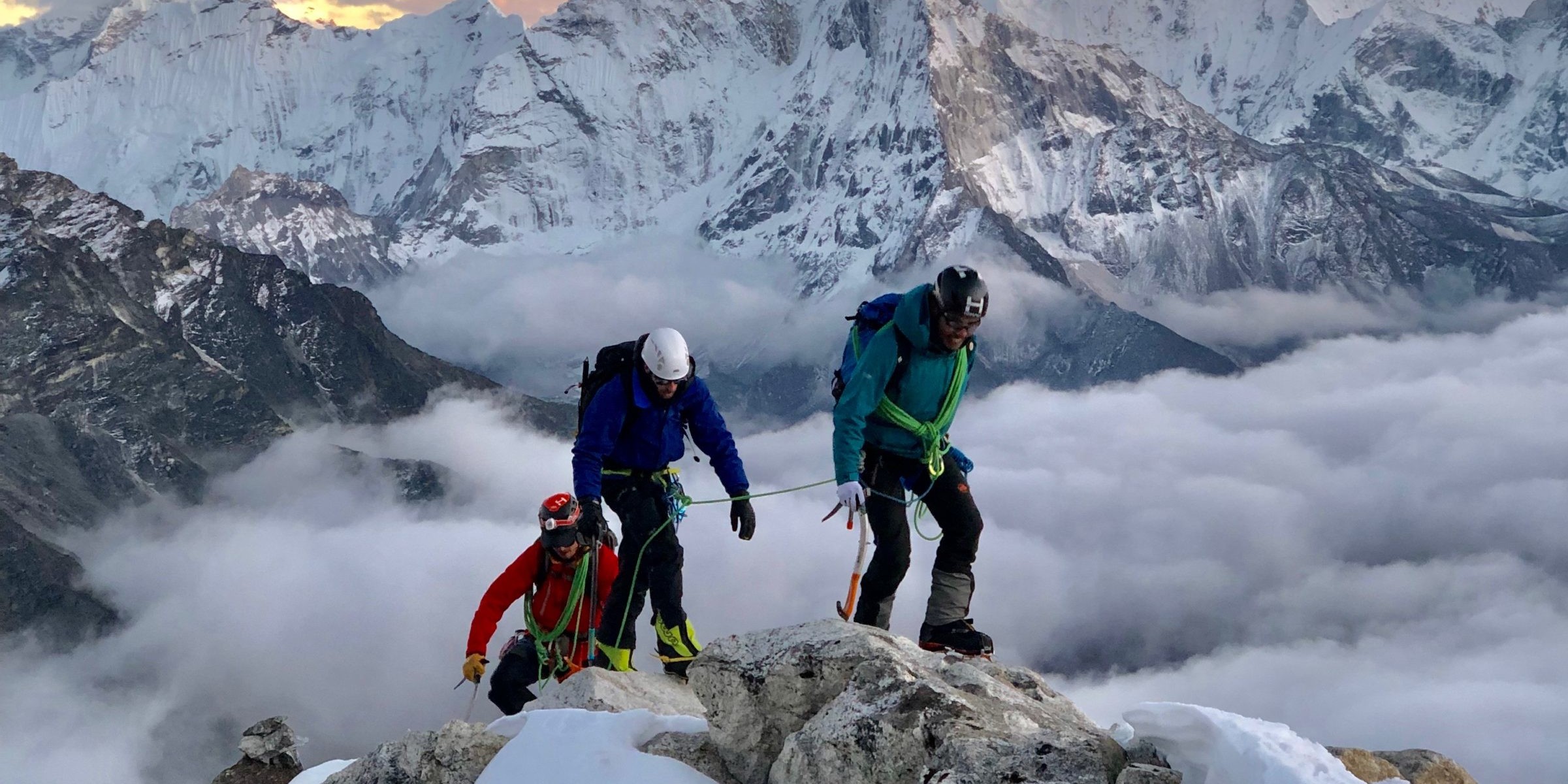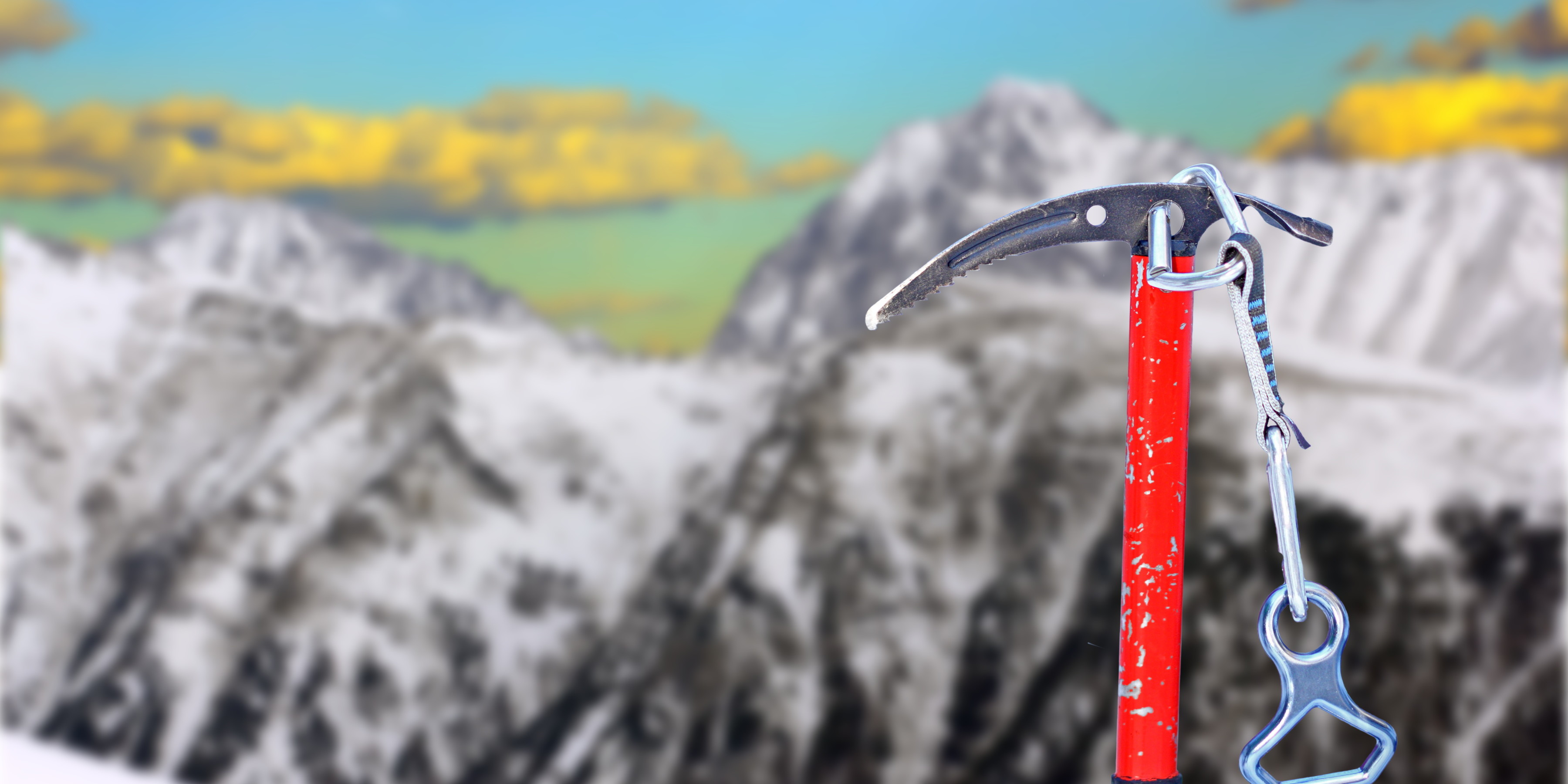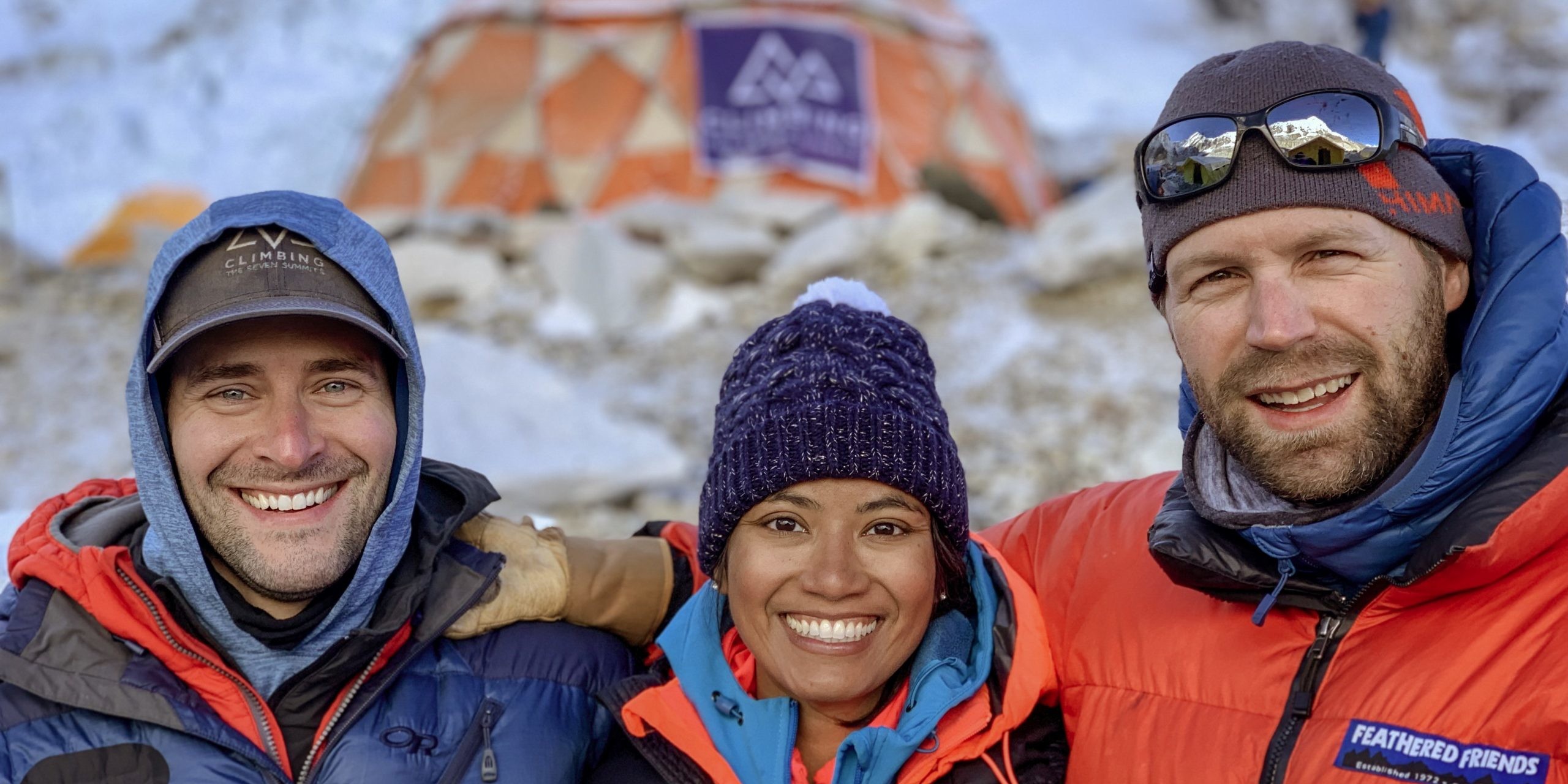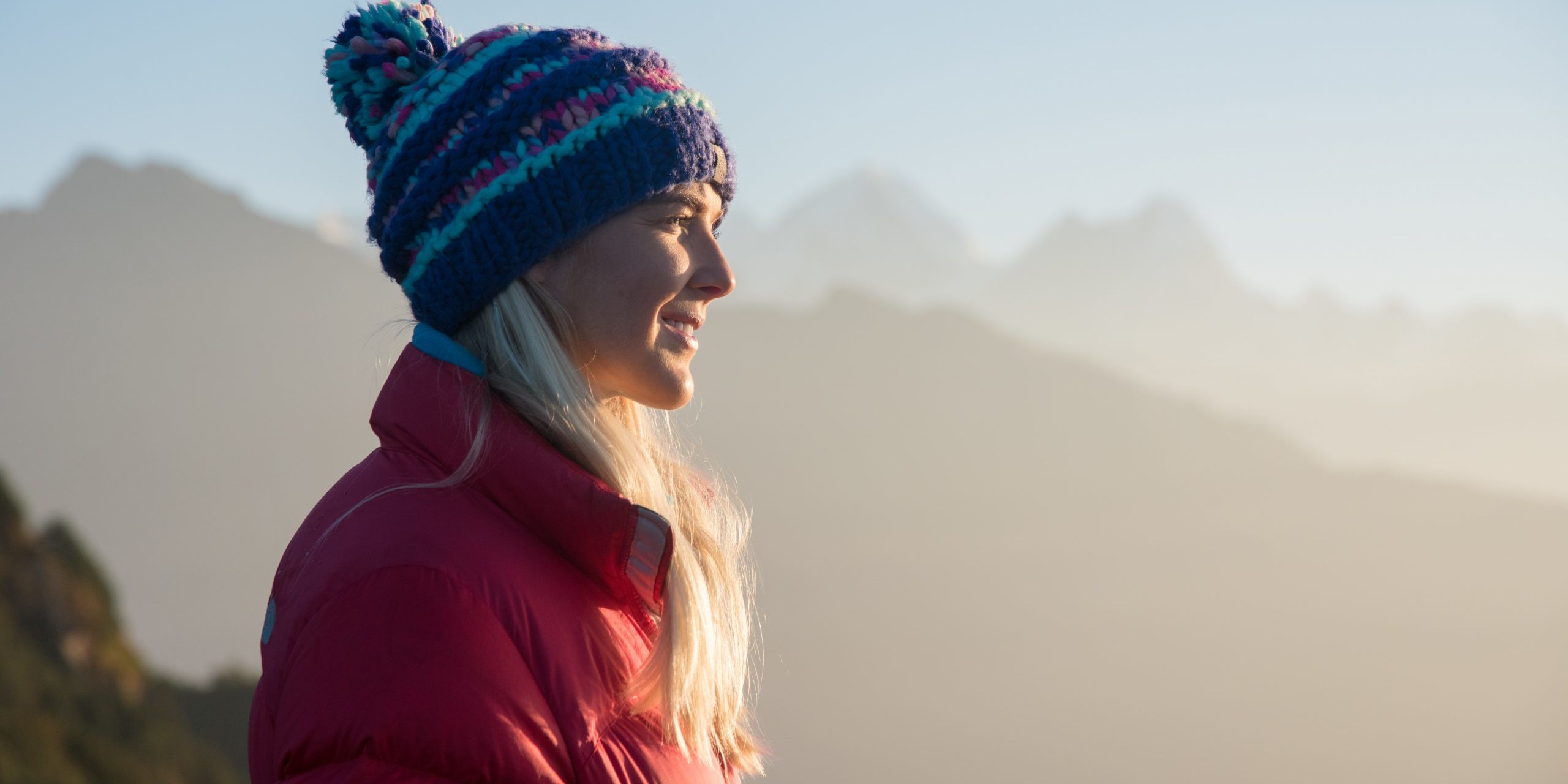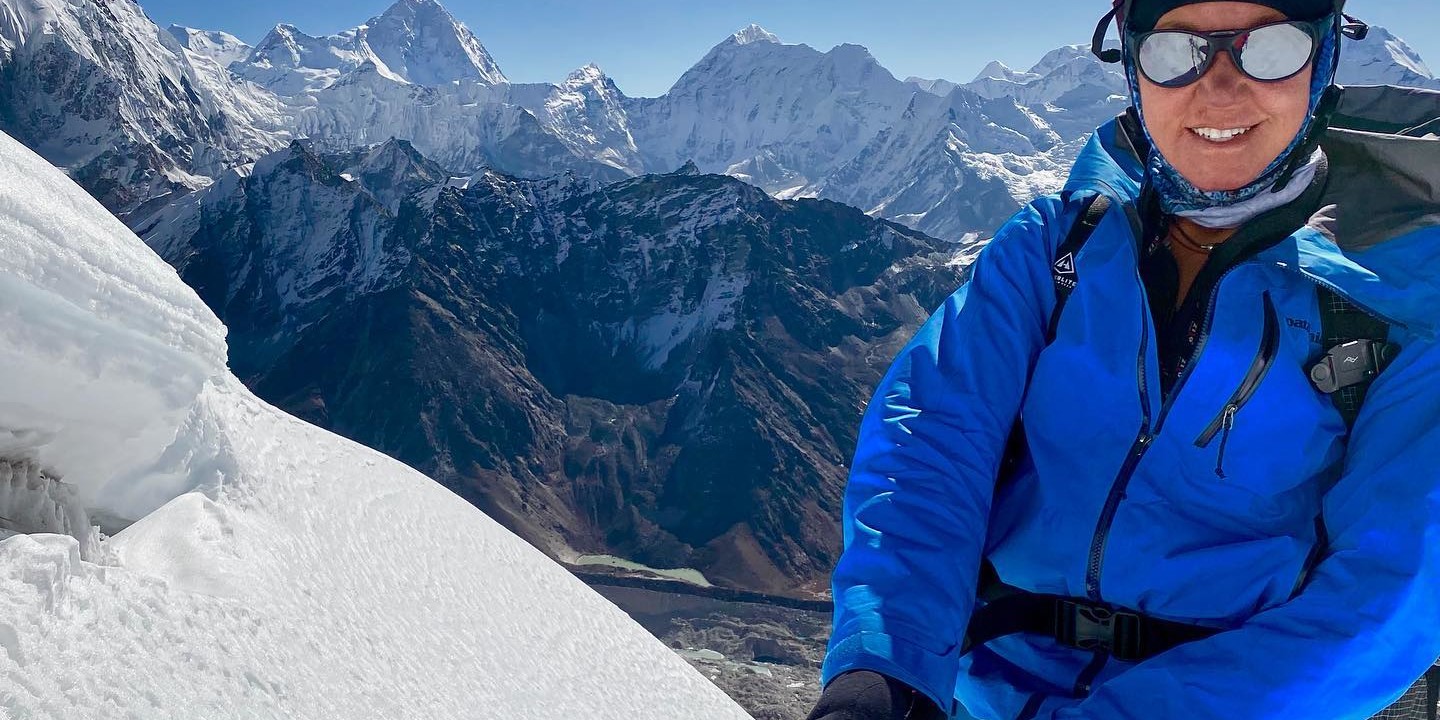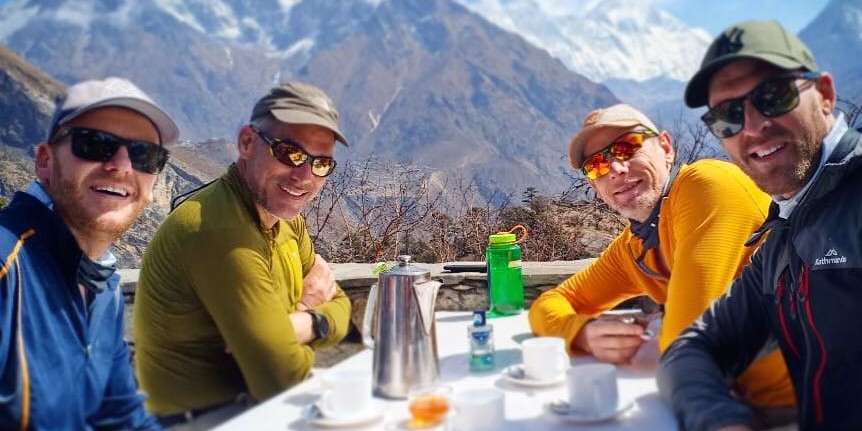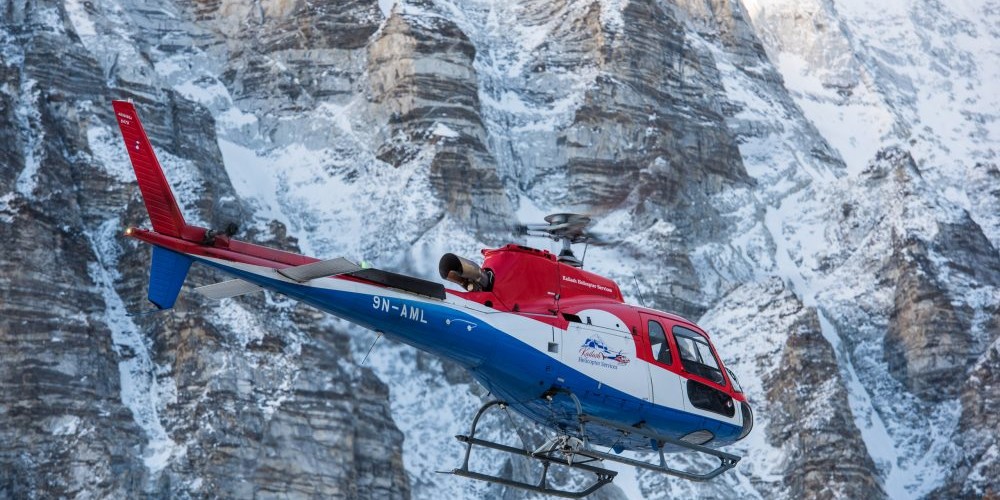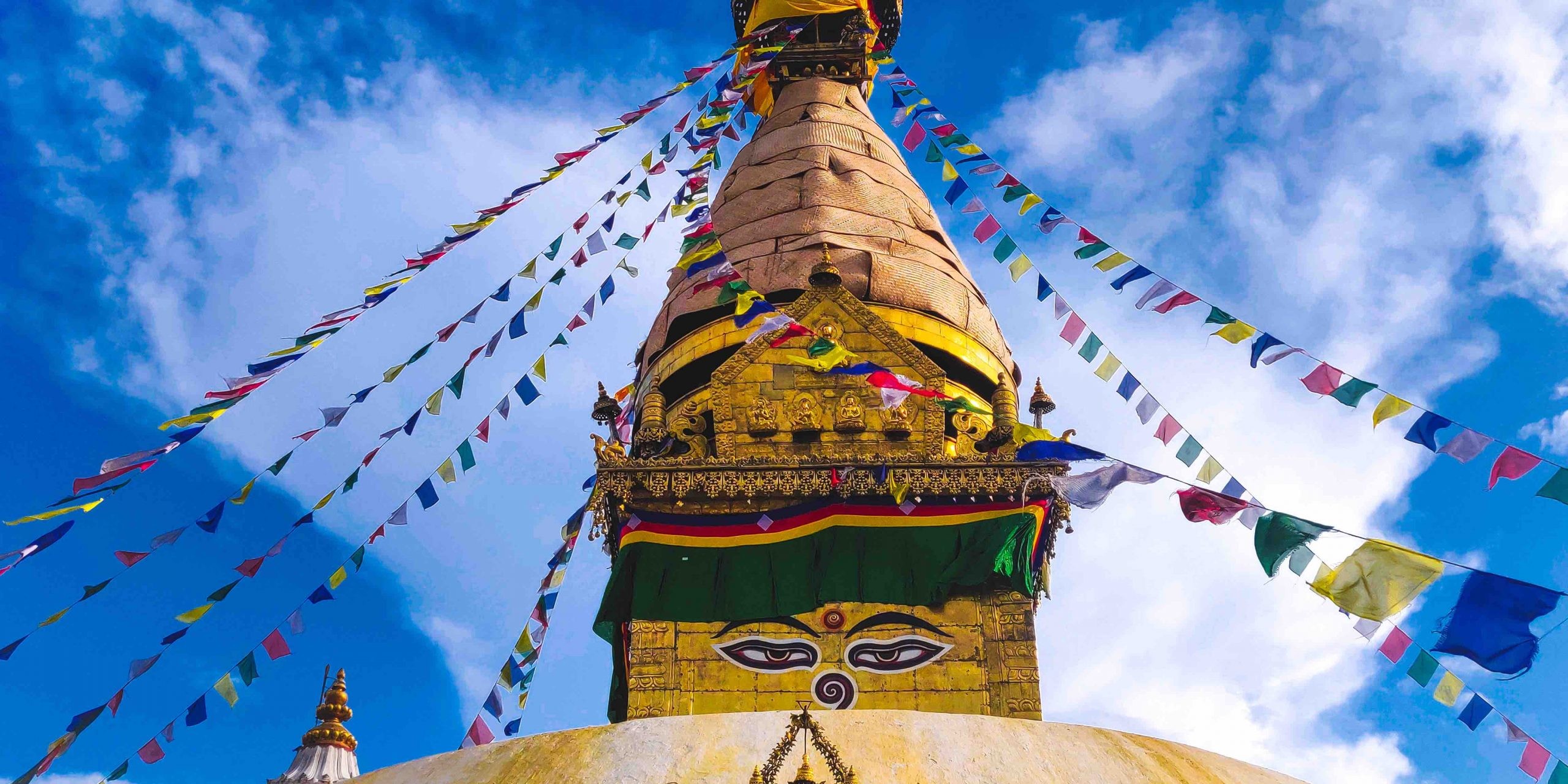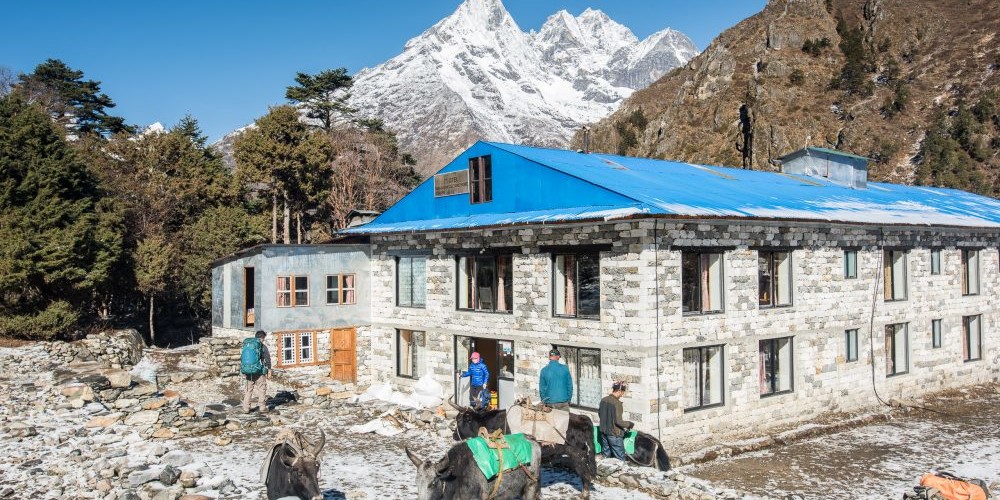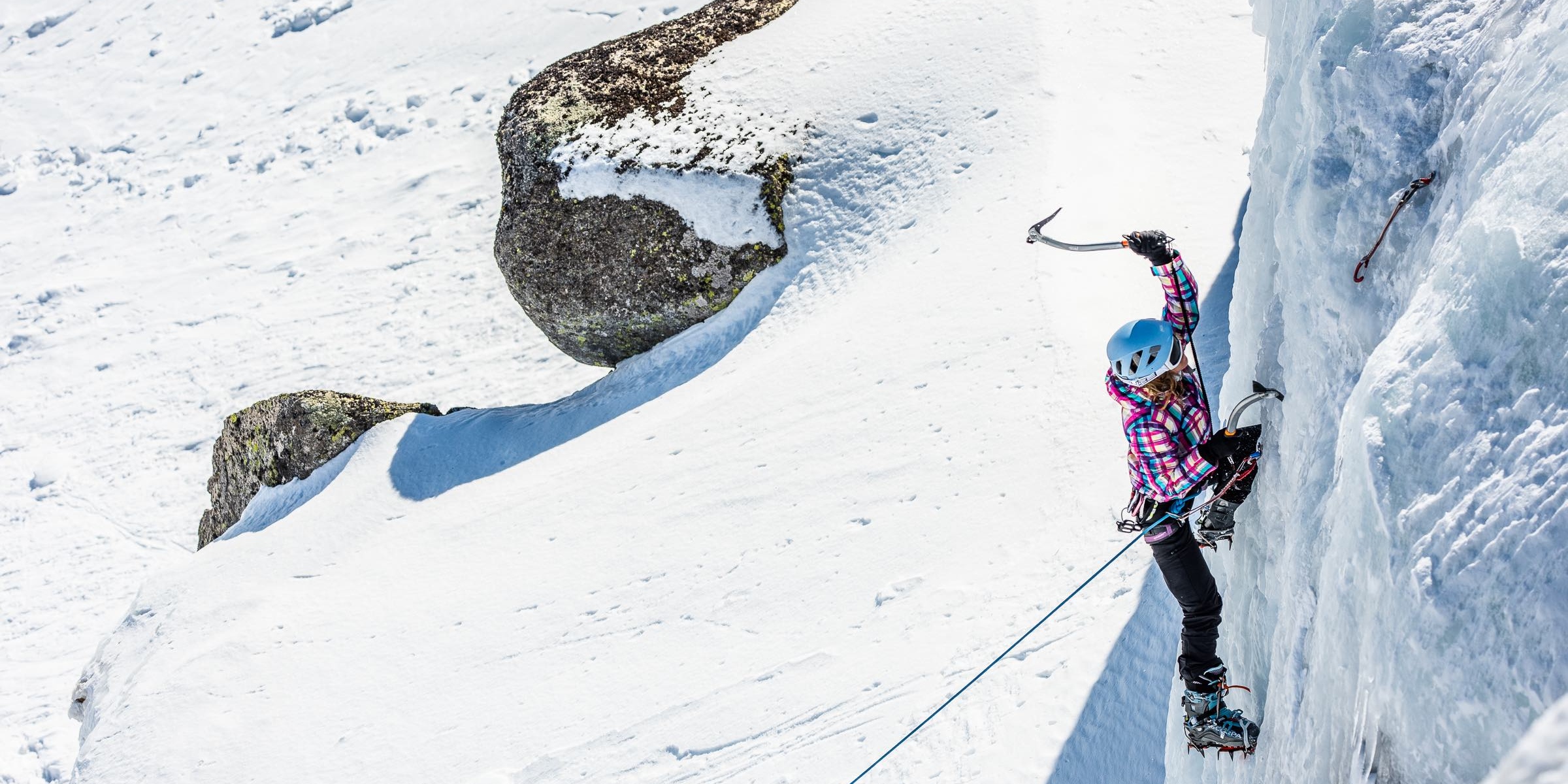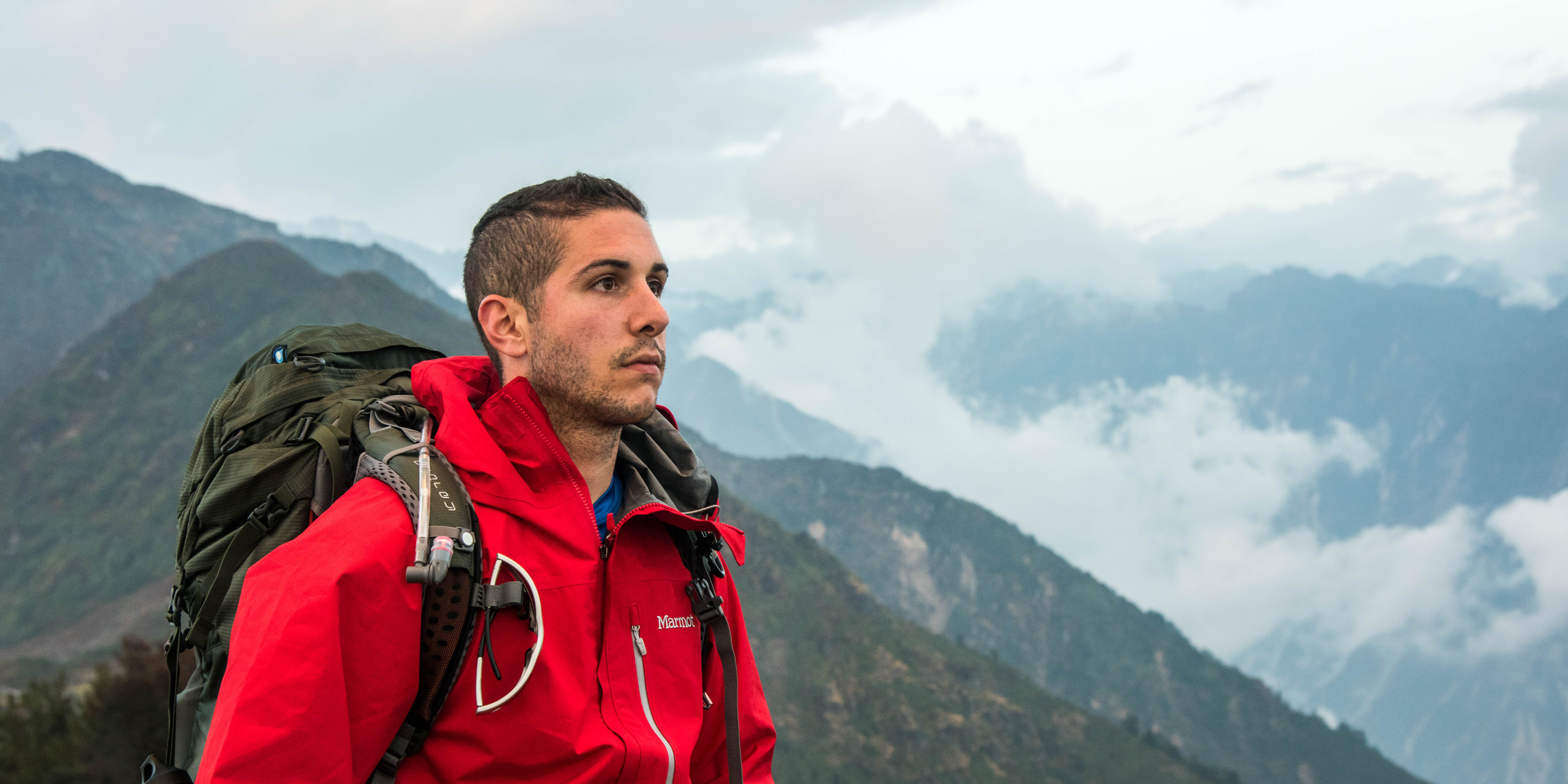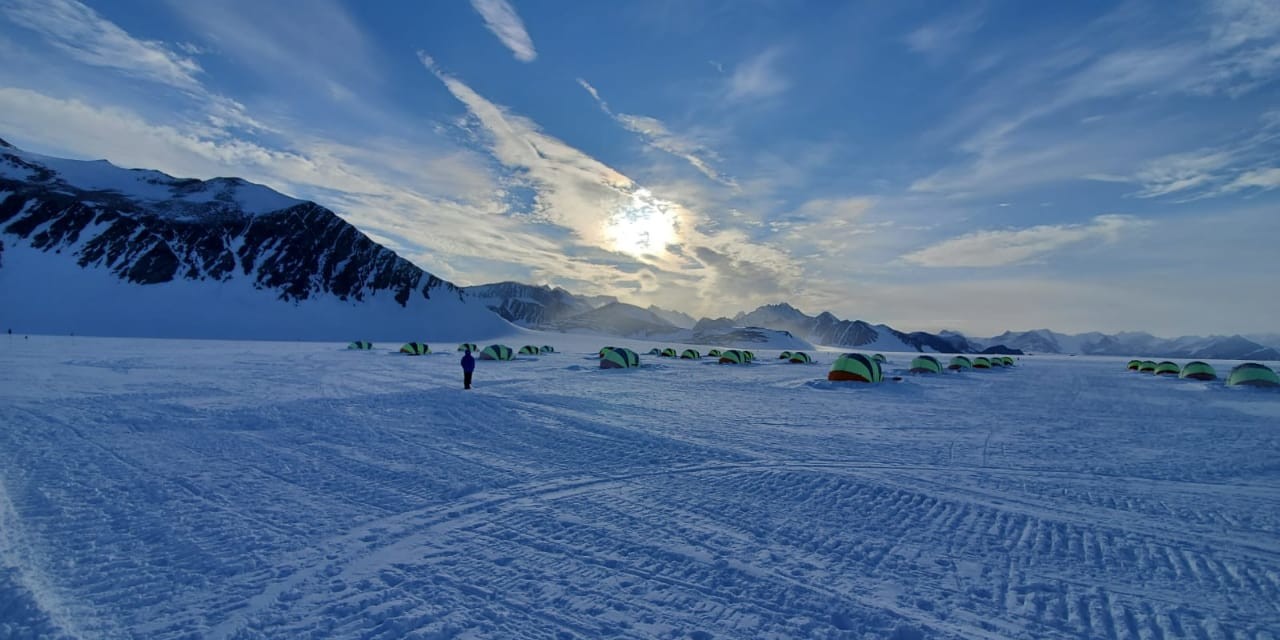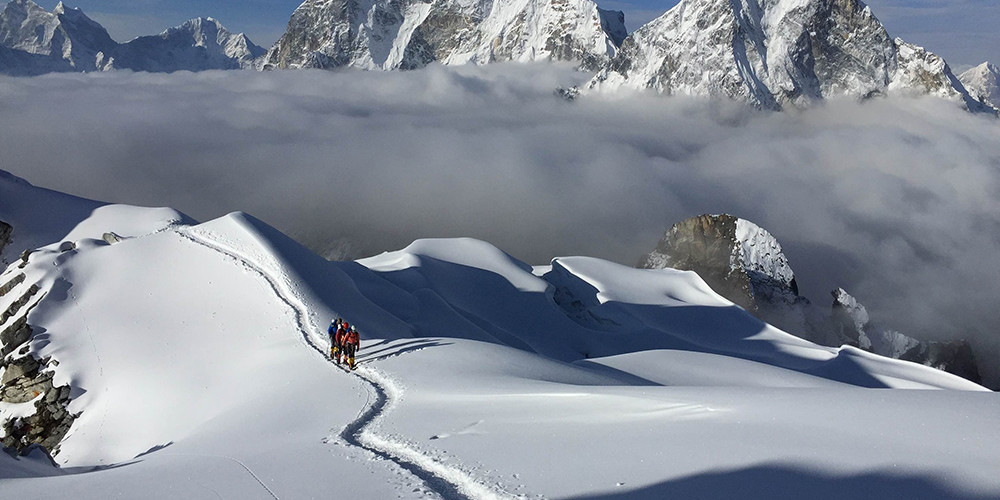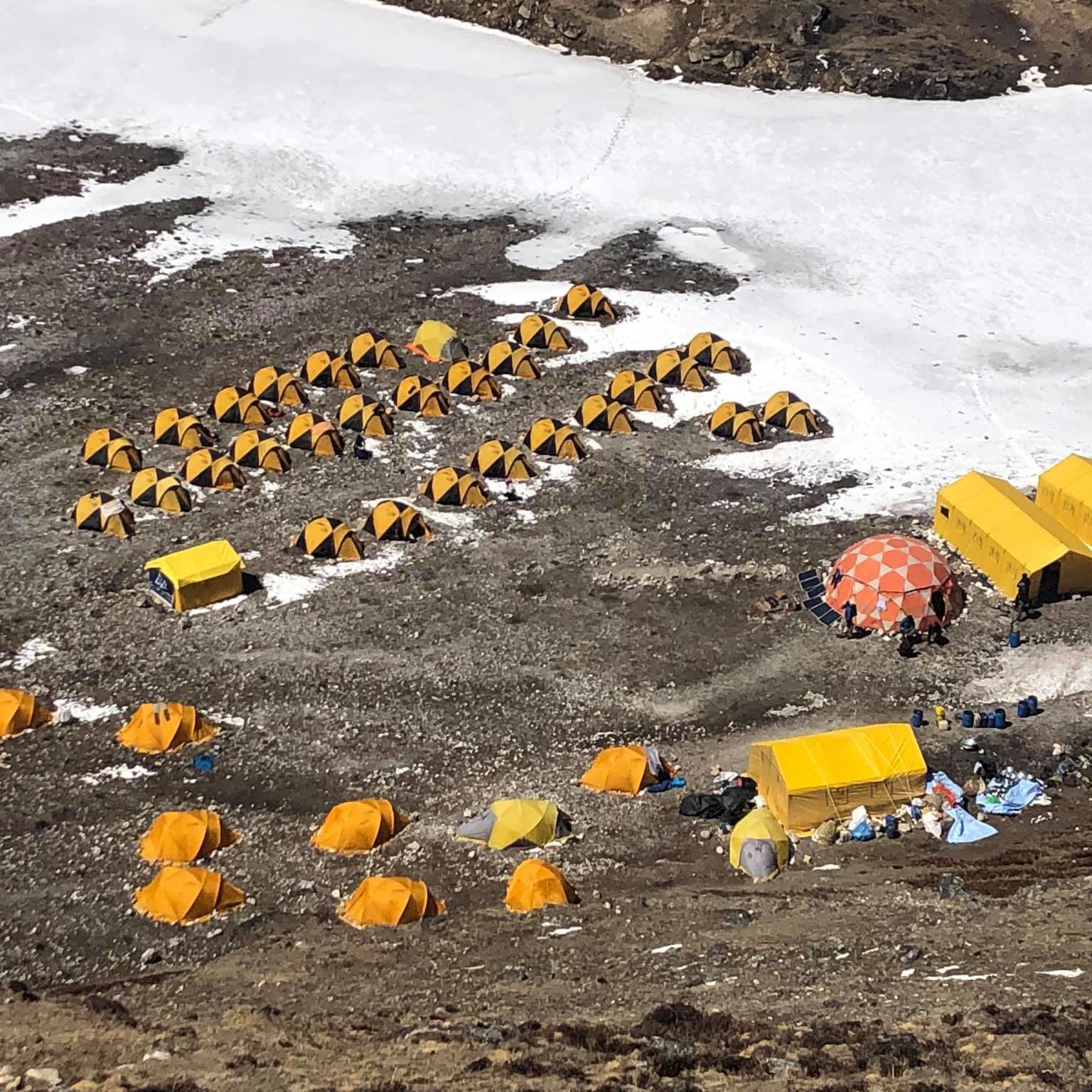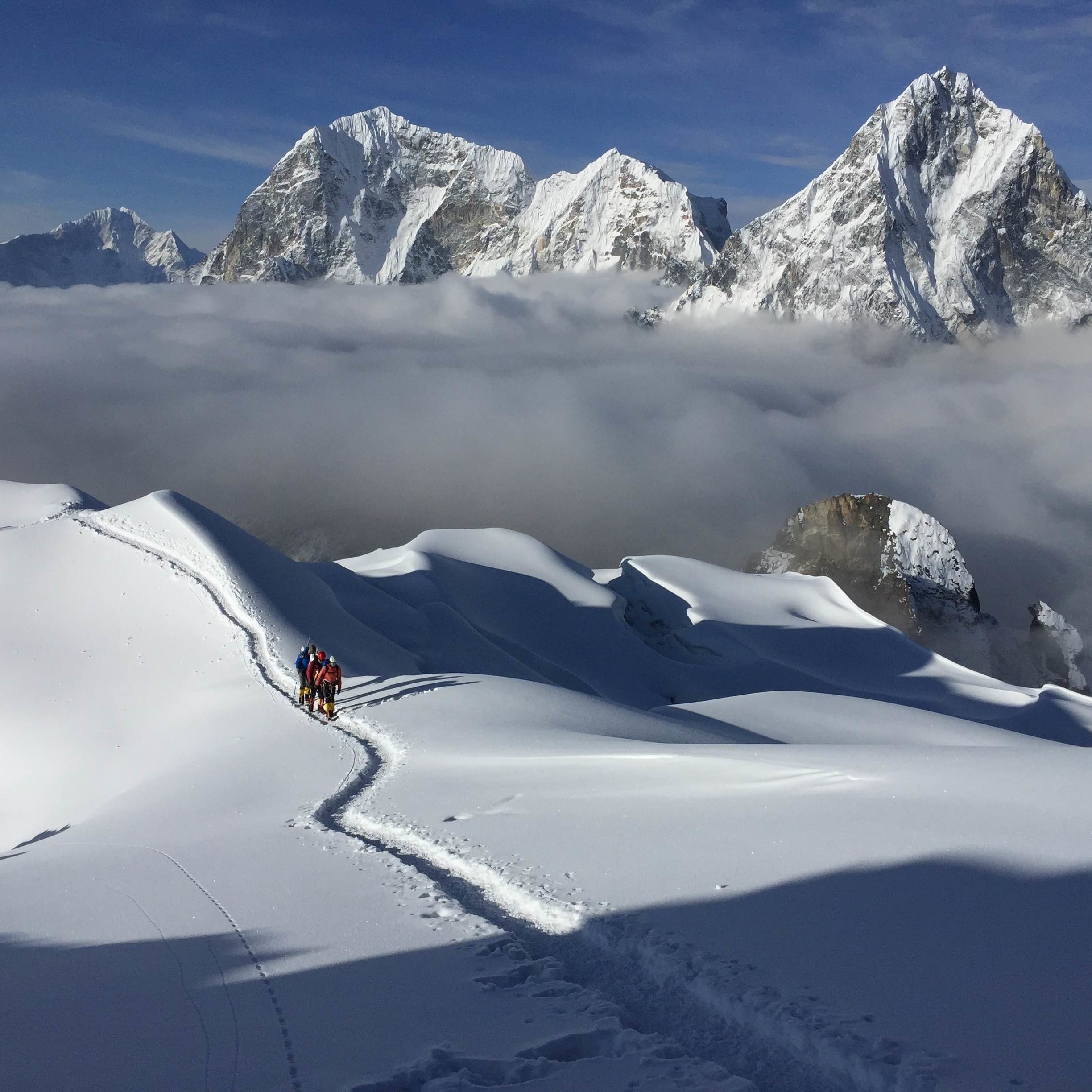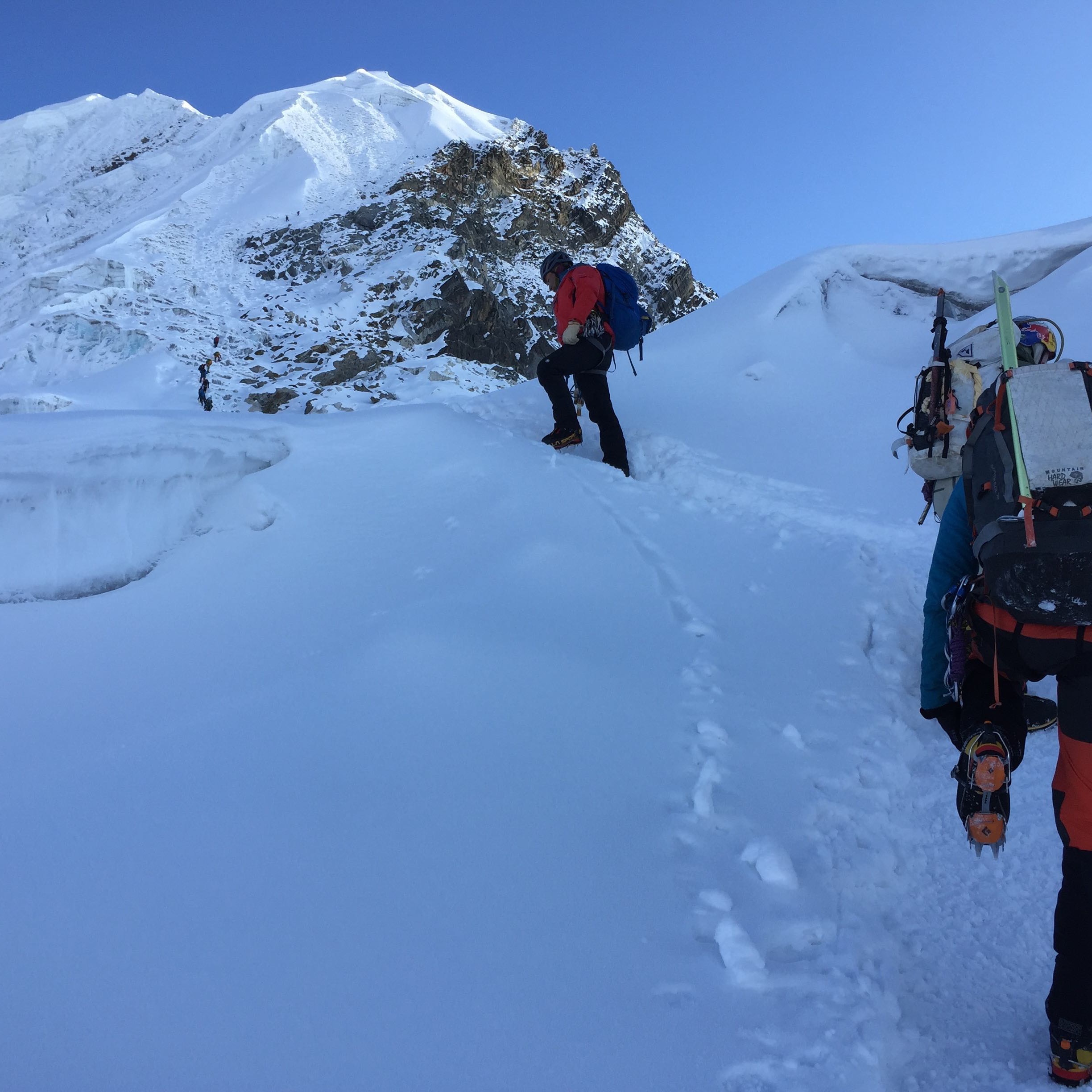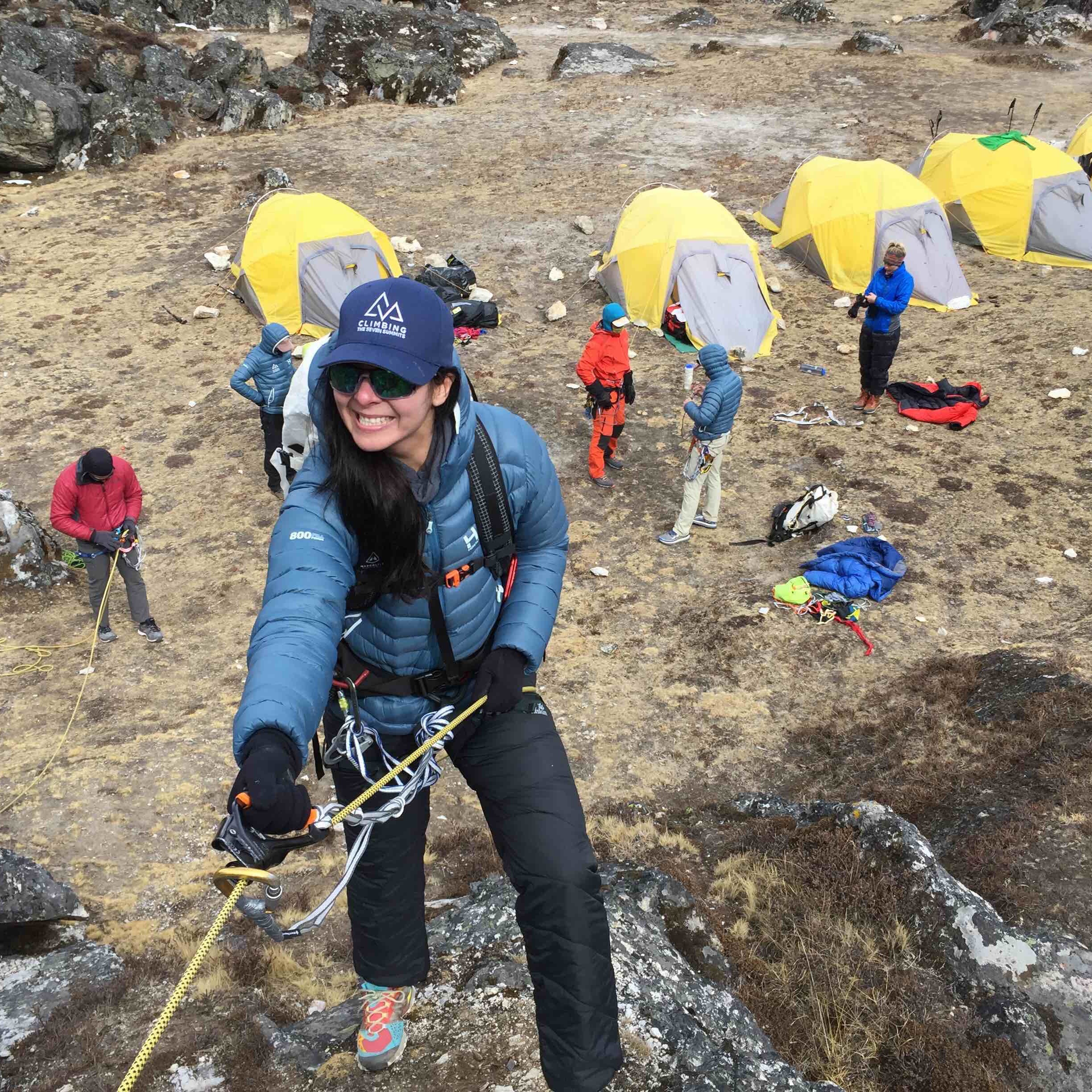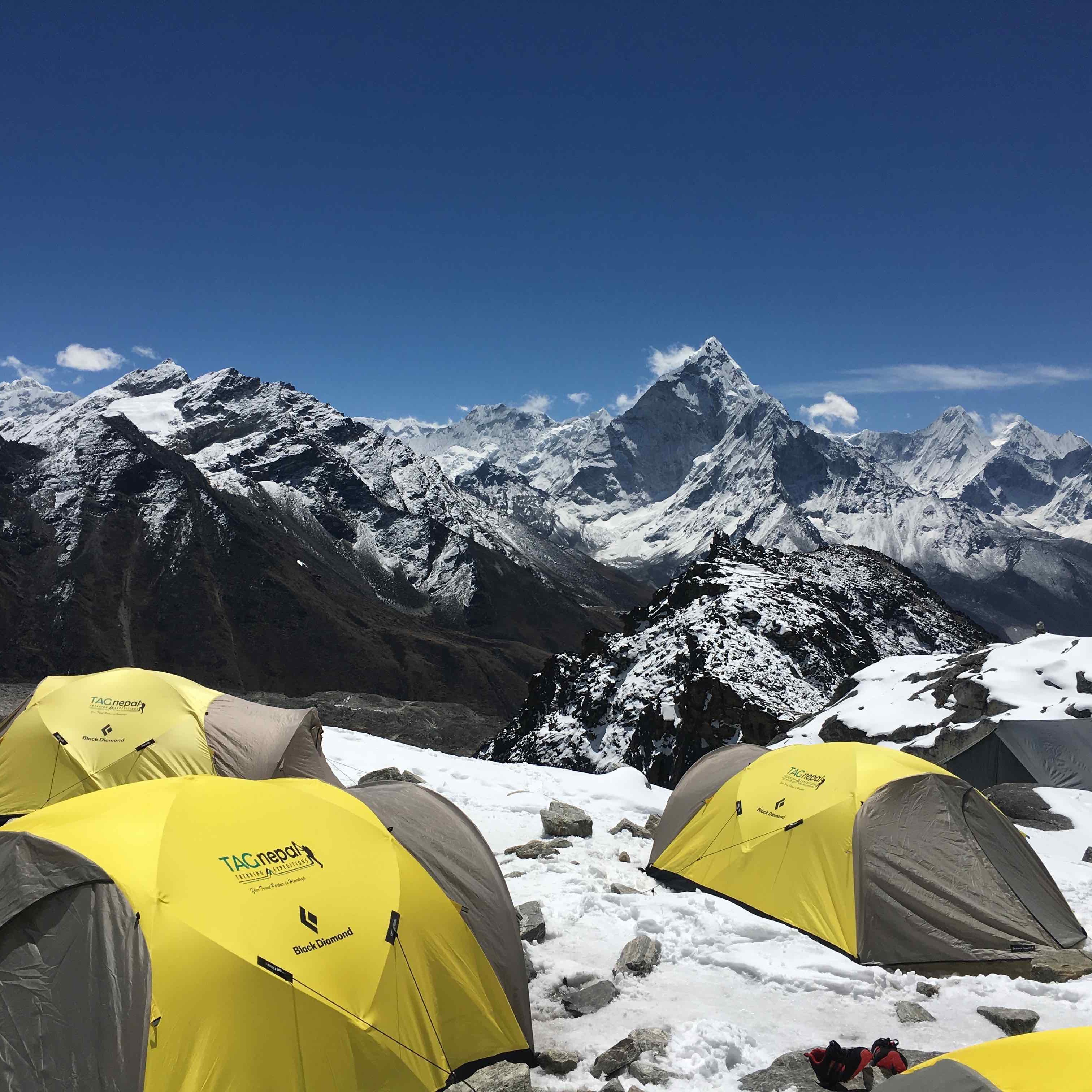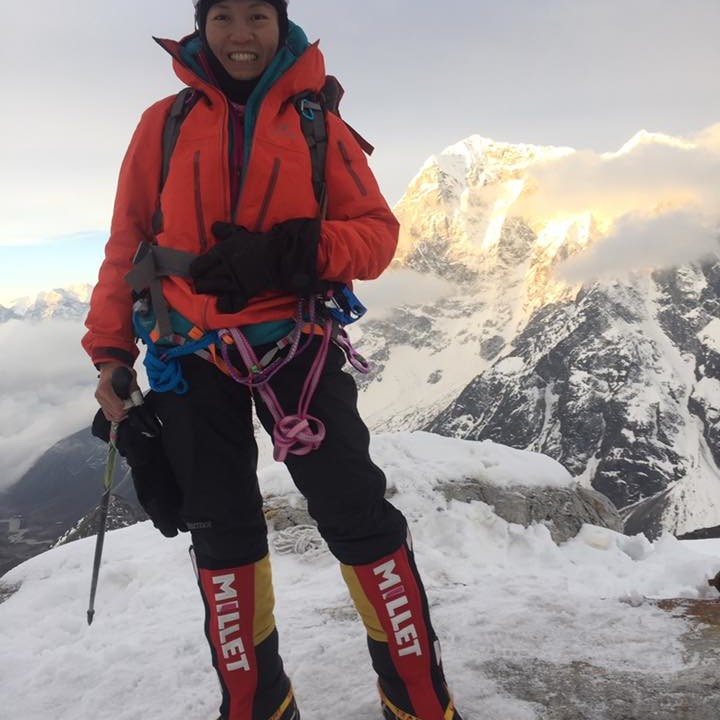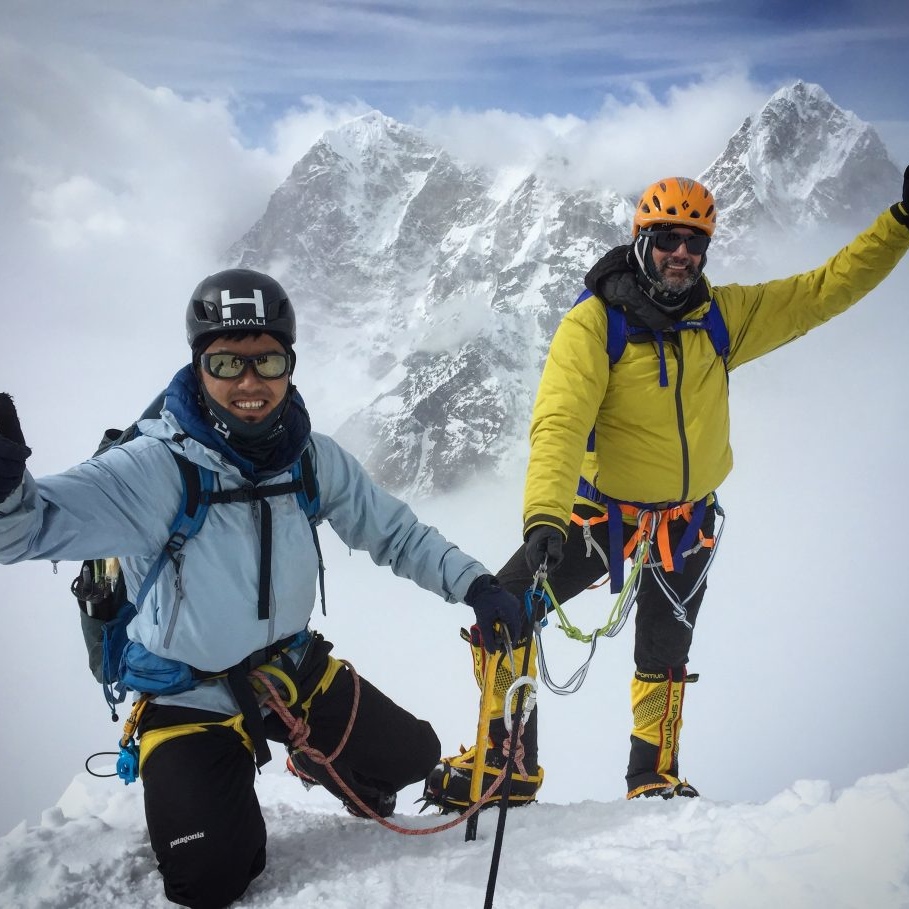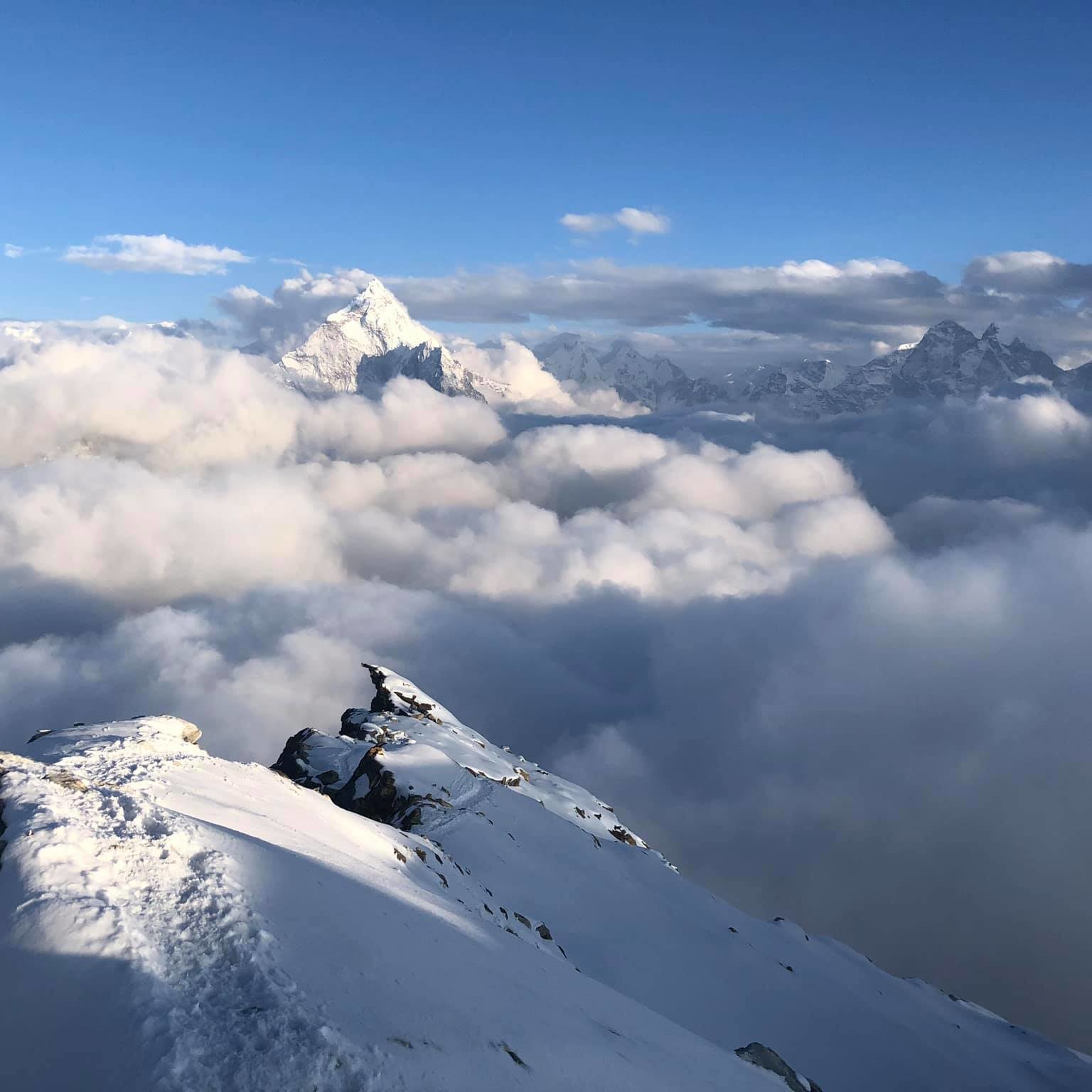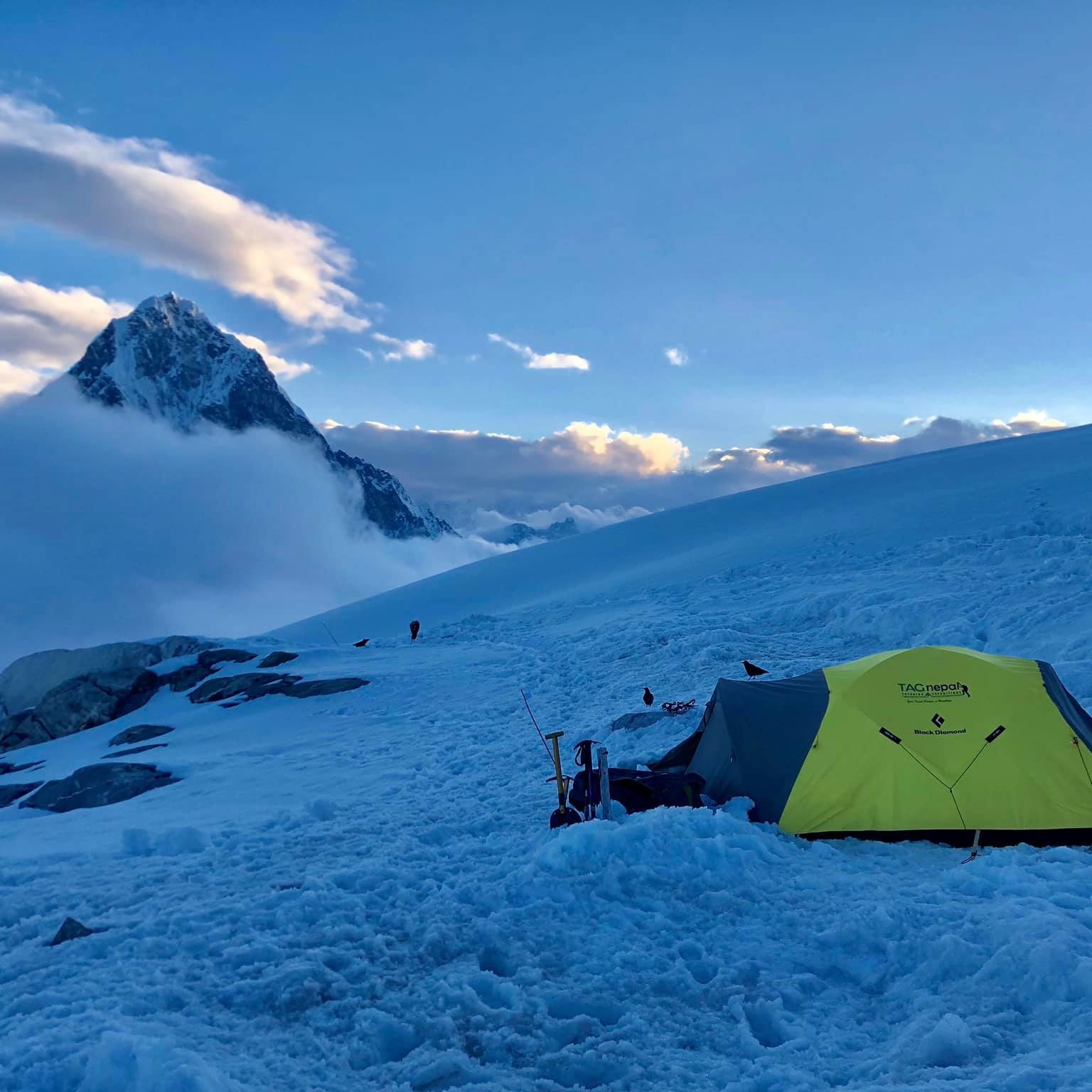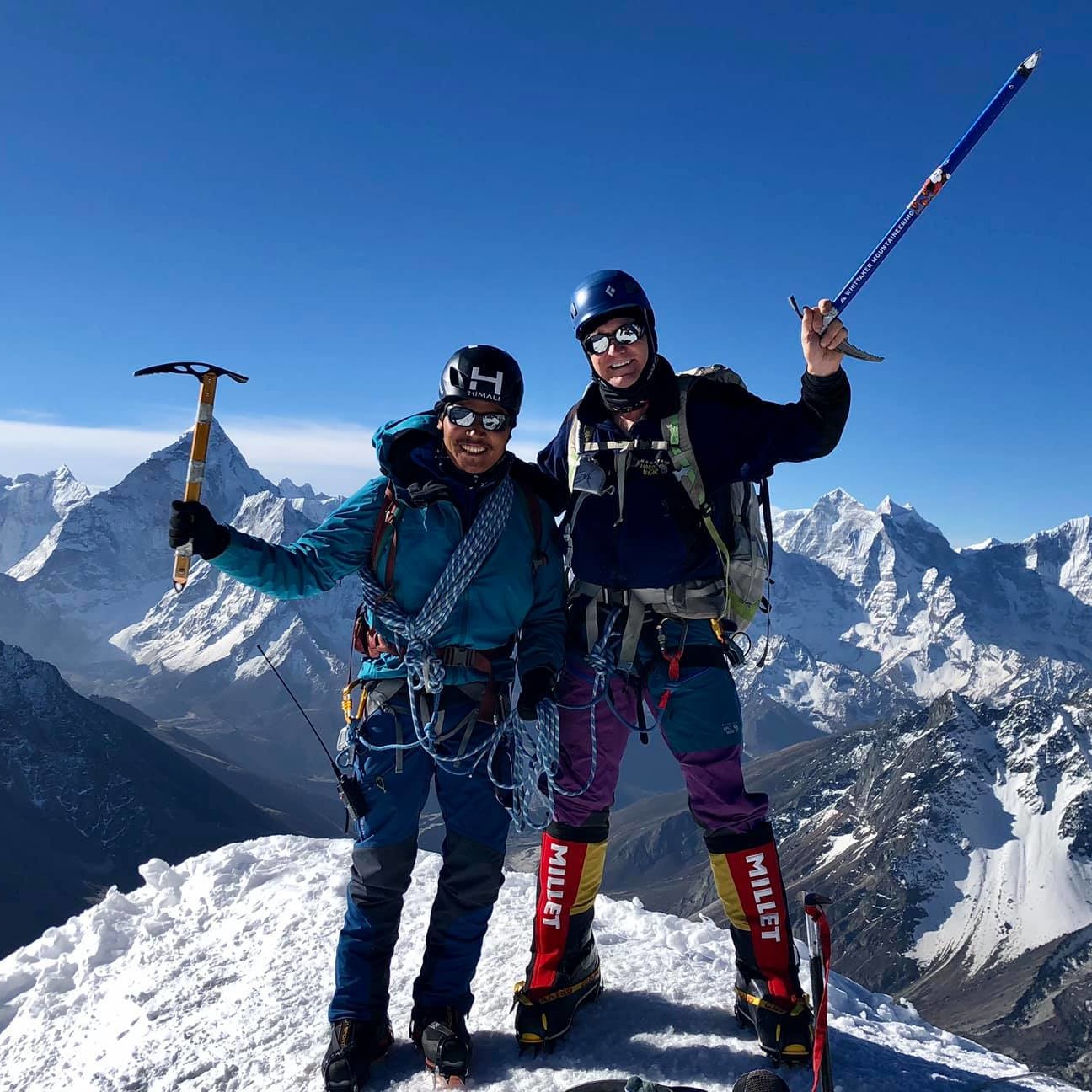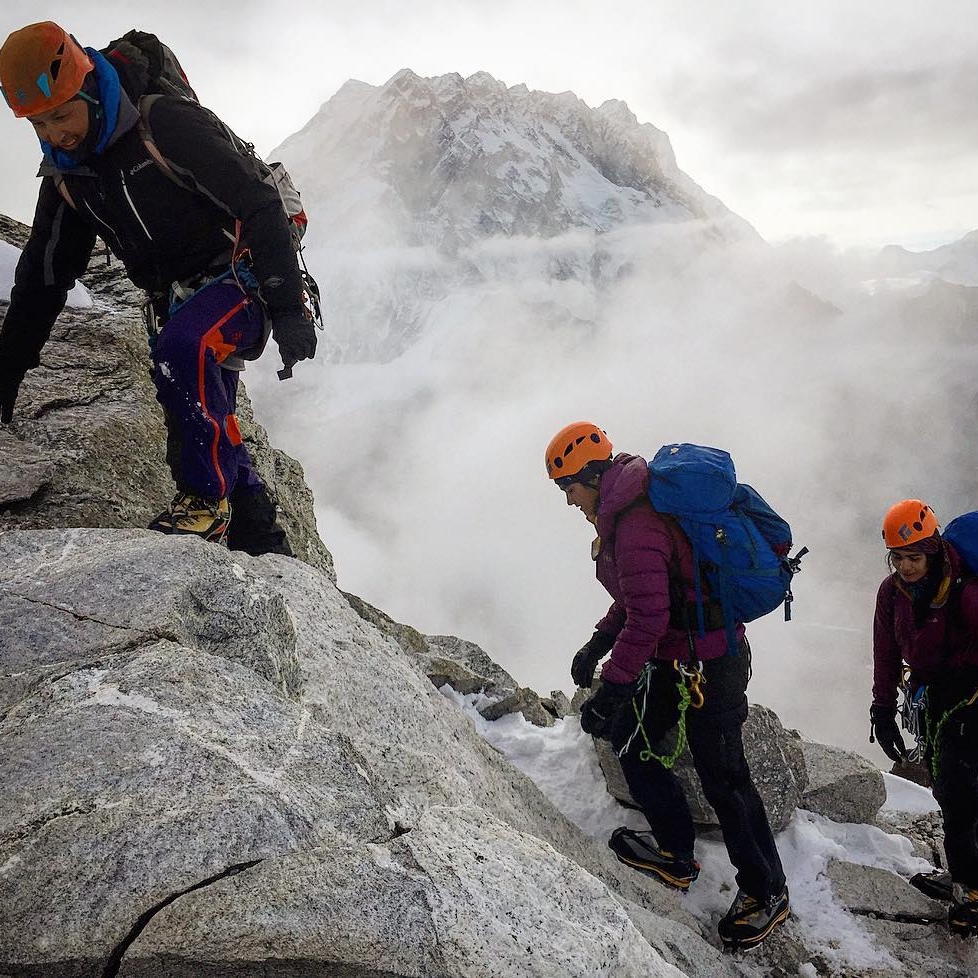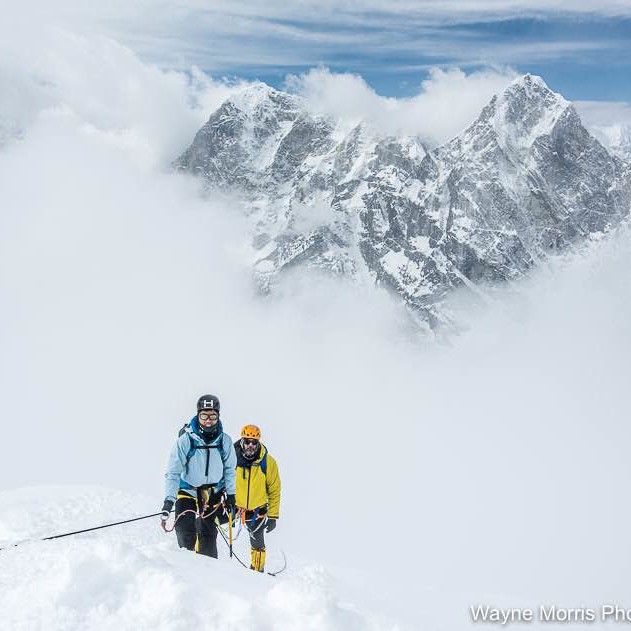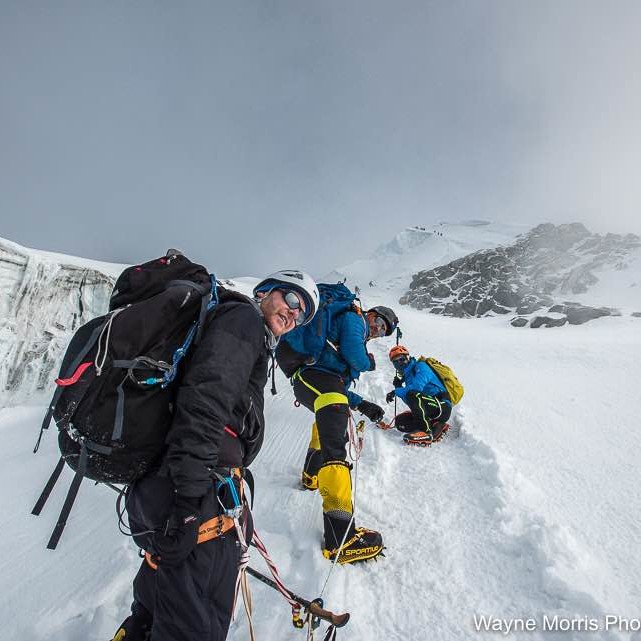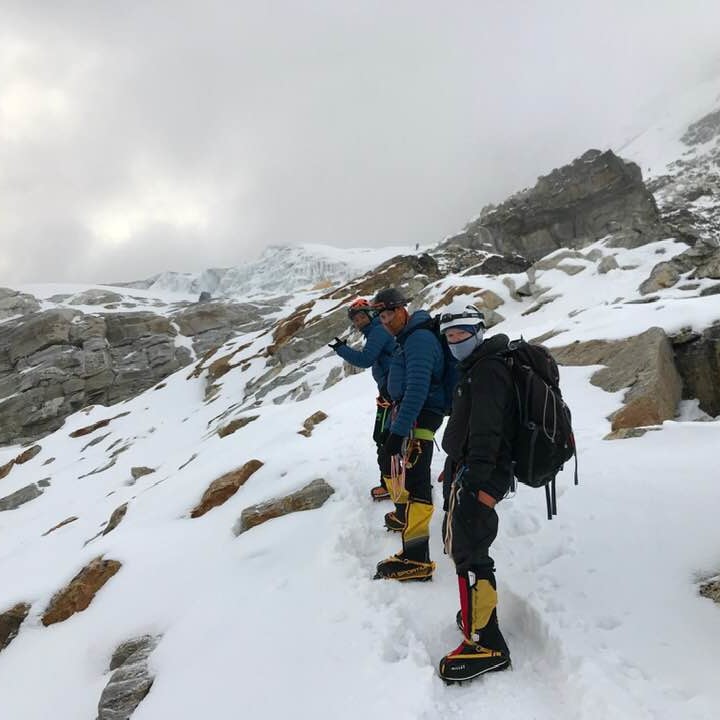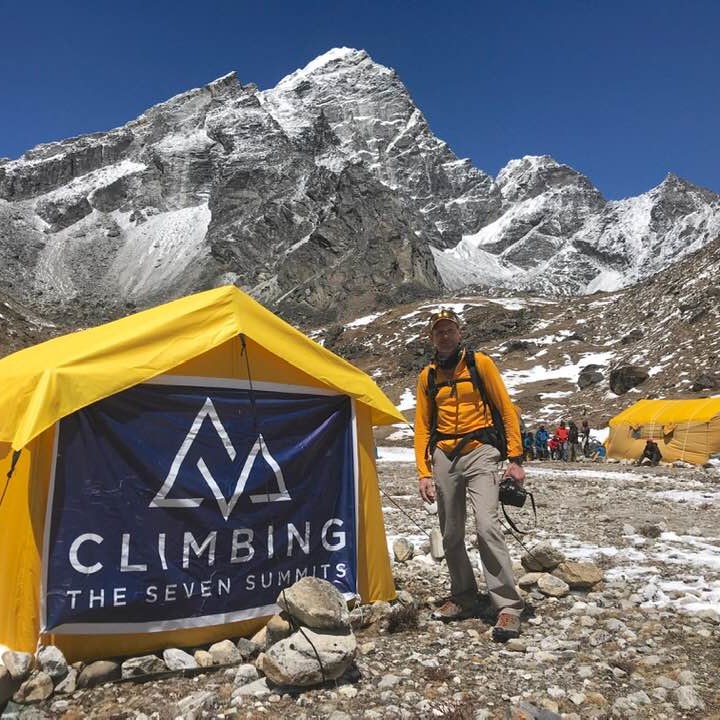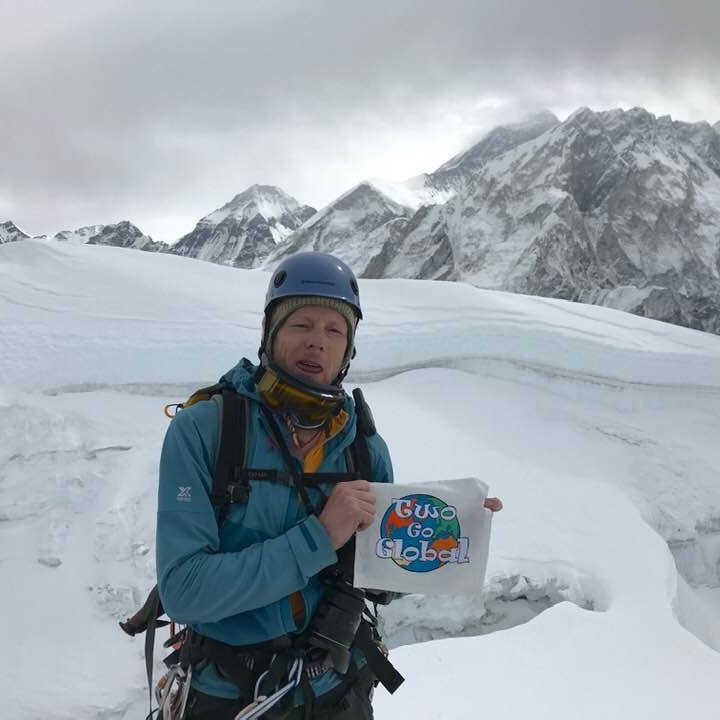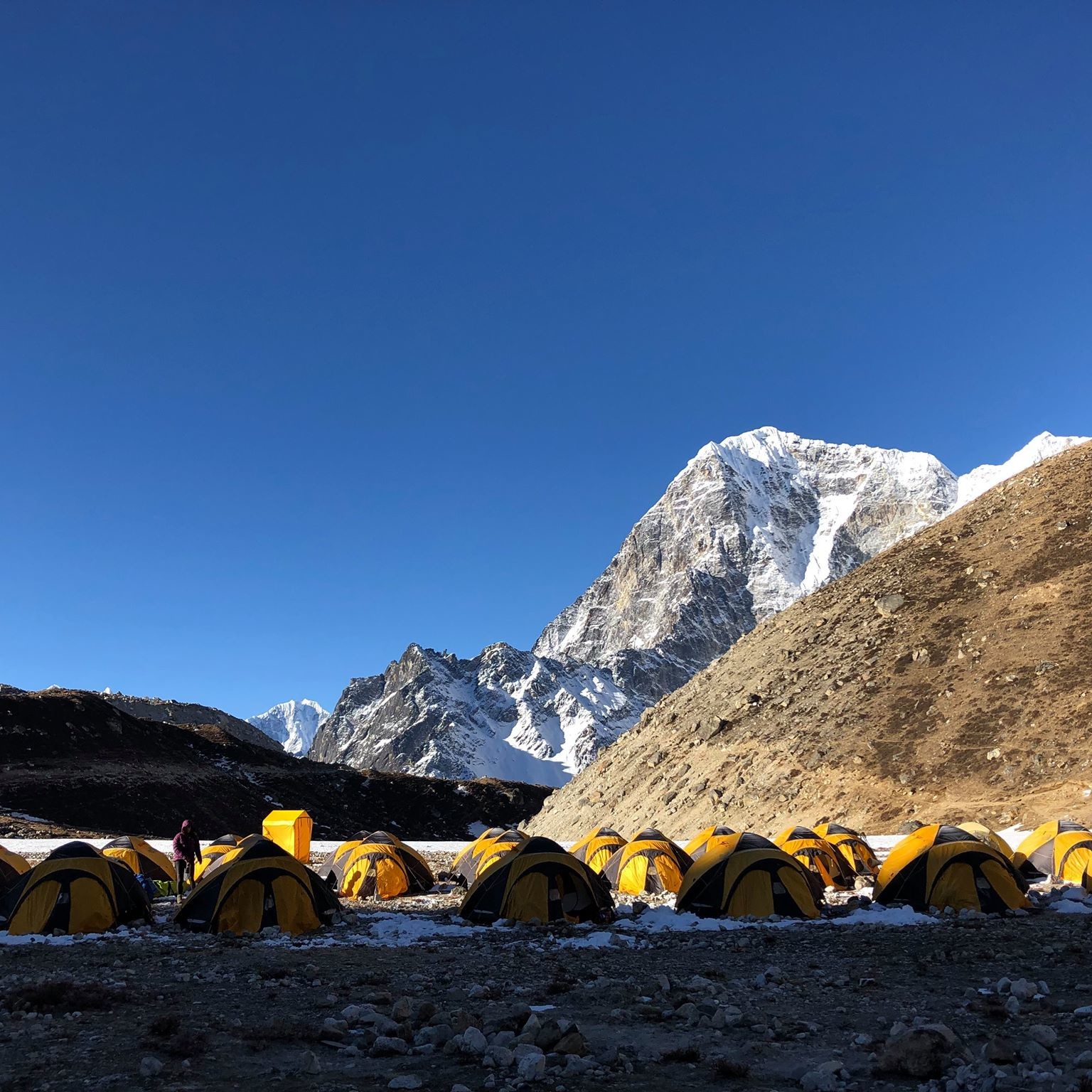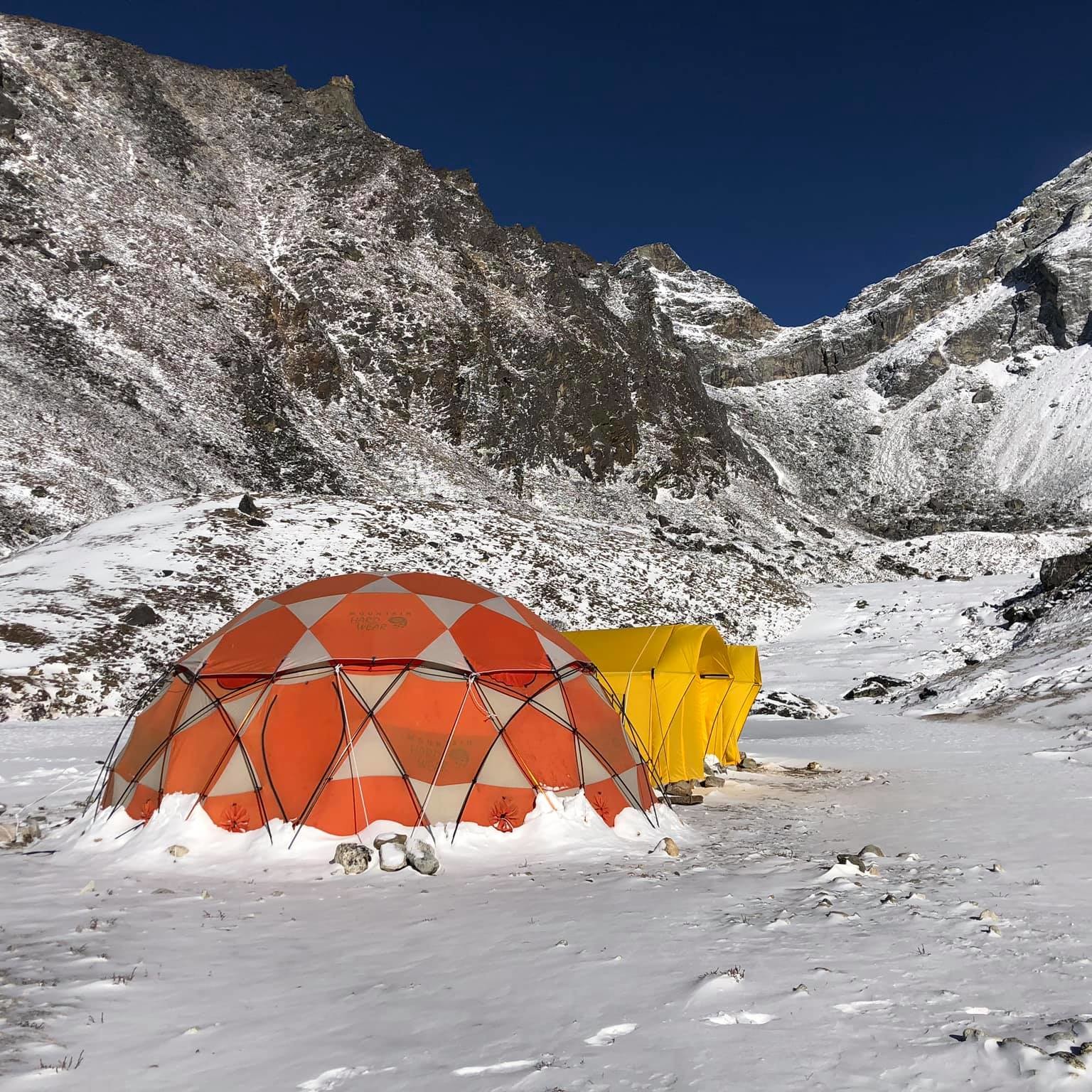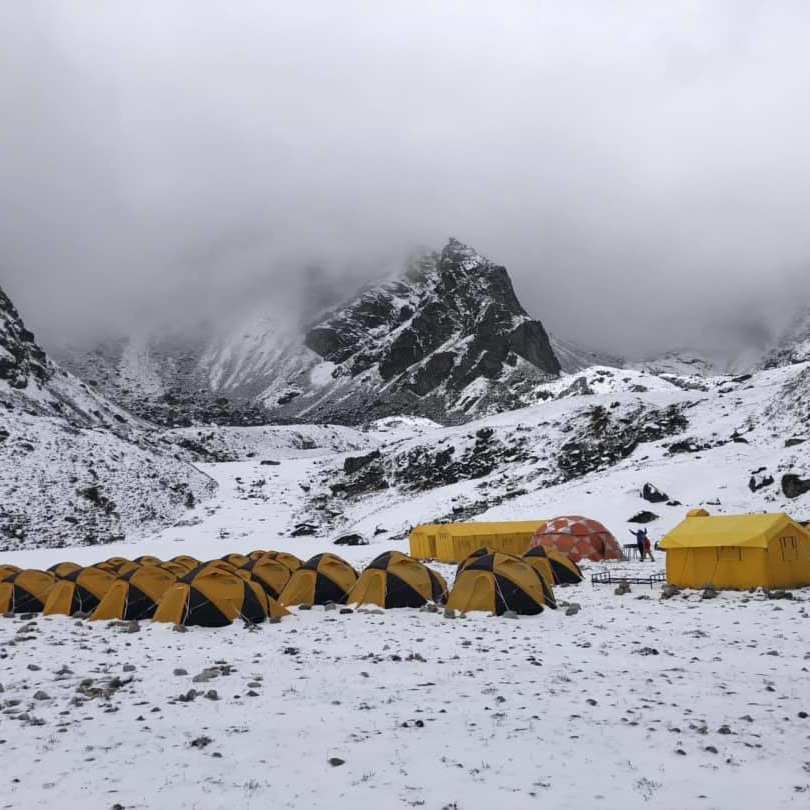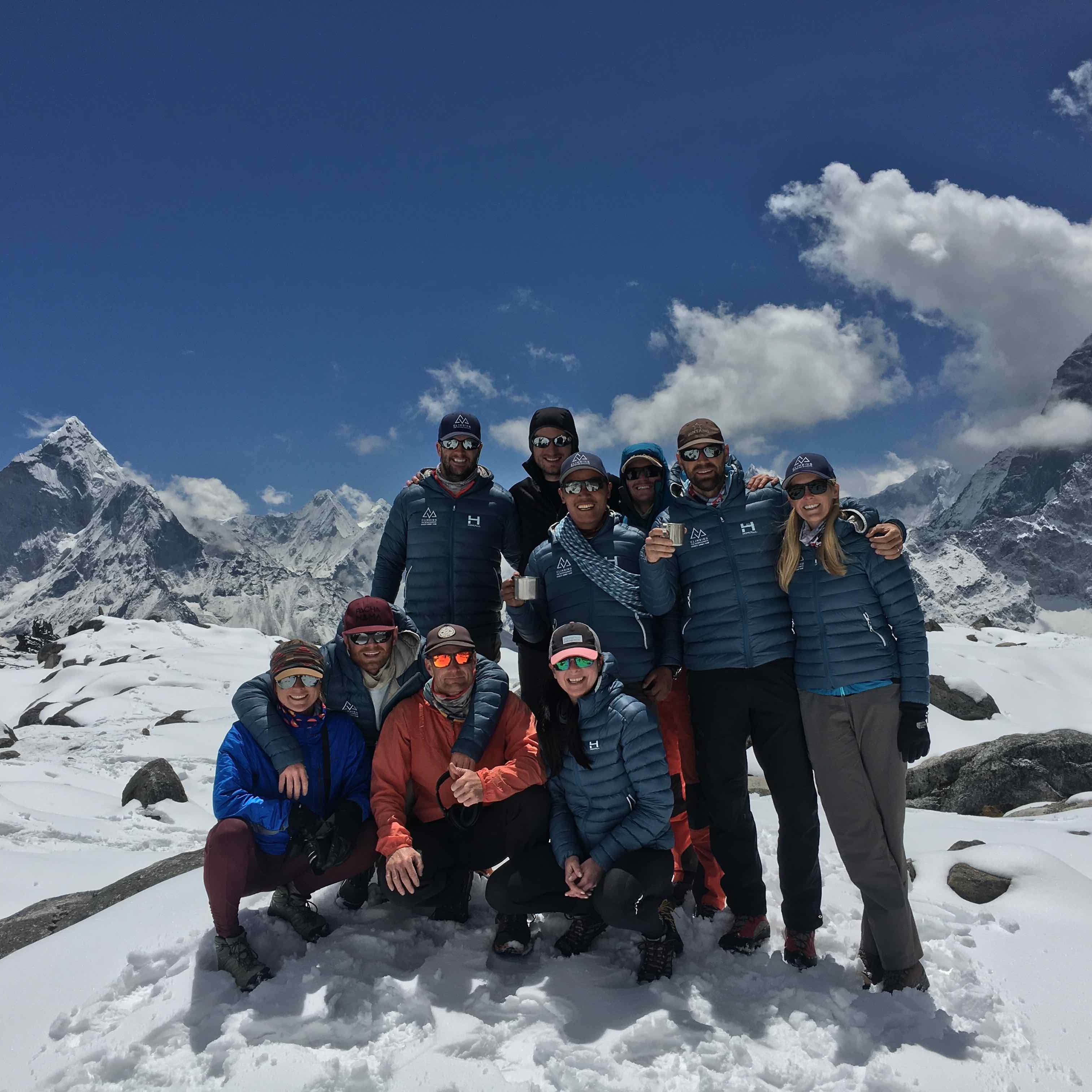3 PEAKS | Nepal
Price Range:
$9,995 USD
Elevation:
6,000m | 5,806m | 6,189m
Duration:
March 30 - April 25 (26 days)
Difficulty:
Intermediate
Share Expedition
3 Peaks is one of the most underrated expeditions. It offers the opportunity to climb three legendary peaks in the Himalayas in a relatively short time frame, giving you a great bang for your buck. It is also an excellent way to capitalize on your training and acclimatization and see some of the best summit views in the world!
Tick off four bucket list items in one trip!
-
- Everest Base Camp trek (2x night stay at Base Camp Proper)
- Lobuche East (6,119m)
- Pokalde (5,806m)
- Island Peak (6,160m)
Our 3 Peaks program is an ideal progression option, open to advanced beginners (prior experience is desired but not compulsory). It serves as an ideal Everest prep course and training for bigger objectives such as Aconcagua, Ama Dablam, Manaslu, and other 8000m peaks.
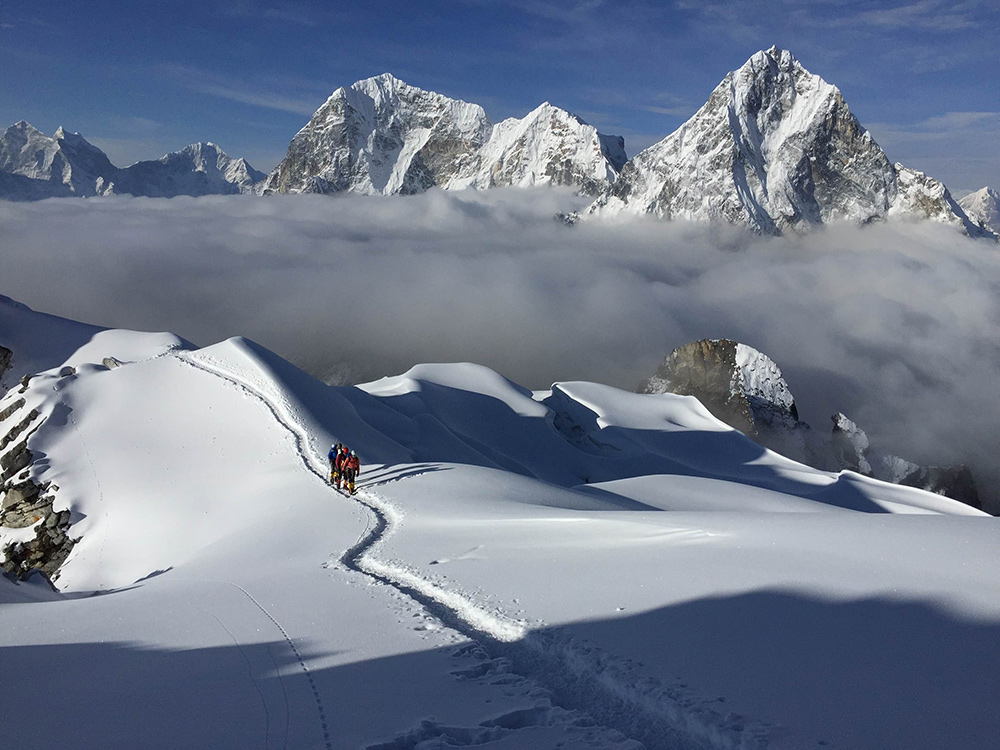
3 Peaks Expedition Options
Our 3 Peaks Expeditions are run annually in April to take advantage of the best weather and most favourable summit conditions. It is a great climb in the Himalaya and has the added bonus of coinciding with our Everest expedition, giving you first-hand access to those resources and the added experience.
Choose from our crowd favorite 3 Peaks Classic Climb or plan a one-of-a-kind expedition with a private climb.
How early should I commit to my climb?
We feel that the sooner you commit the better as it gives you more time to prepare mentally and physically for the climb. Climbing the 3 Peaks is a big undertaking and something that you will want to work up to consistently. I have found that people are generally more successful when they commit earlier as it gives them longer to shake out any problems that may arise, arrange their home and work life to be away for a number of months, and build their fitness endurance and strength up over time and thereby avoid injury etc.
What’s the best climb to prepare for the 3 Peaks?
Hands down I think that Elbrus is the best, most specific 3 Peaks prep. You get an understanding of alpine climbing and all the skills you will need for the ascents.
Will I need to purchase insurance?
Yes, trip insurance is required for this program and it needs to cover the entire cost of the trip and include trip cancellation, trip interruption, medical expenses, repatriation, and evacuation for the entire length of the expedition.
Trekkers are required to have the same coverage. Unforeseen hiccups are part of adventure travel both before and during the expedition and it can be very expensive. Every effort should be taken to account for them in advance. Please forward a copy of your insurance for our records so that we can help you in the event that it needs to be used during the expedition. Most insurers require us to contact them immediately.
For more information on trip insurance please visit the “Trip Insurance” page
What program upgrades are available?
The main add-on for the 3 Peaks program is single rooming upgrades and/or deluxe rooms in the trekking lodges. Please discuss this add-on with us and we can help you decide if it is right for you.
It’s a long time away from home – can my family and friends join me?
Yes, your family and friends are more than welcome to join us on the trek into base camp and even climb Lobuche peak (or all 3) if they like. (Our standard treks stay a 2 nights in Base Camp before departing but we have had people stay longer and this can be arranged by chatting to us directly) Please let us know immediately if you have people who want to join us so that we can make arrangements for them. Space in hotels in Kathmandu and in the teahouses is limited during climbing season so we need to know final numbers asap!
What’s the acclimatization process?
Our entire expedition including the trip to base camp is slow in order to allow our bodies ample time to acclimate. In the Khumbu, we gain altitude gradually and this slow process will allow us to acclimate properly and avoid altitude sickness. That means there is plenty of down time while your body adjusts. Please bring a few books or movies on your devices and be patient. This is a slow process but it will give you a much better chance at success on the climb and trek. Make sure to communicate with your guides directly if you are experiencing any altitude issues.
How much cash should I bring?
It is better to have more money than you need than not enough, while most things are covered on the trip once you land in Kathmandu (check what’s included/what’s not included list for details) you will still need cash. The cash that you need to bring includes money for visas ($50 for 1 single entry 30 day), Sherpa tip pool ($600 for climbers and $300 for trekkers), money for staff tips (customary but optional) $200 for potential consultation and treatment by the doctors at base camp, $500 to cover expenses for a potential early departure (not often, but sometimes this occurs) and $1,500 – $5,000 if you think you’ll want a helicopter ride out, $300 for miscellaneous expenses like non-group meals, shopping, drinks around Kathmandu and while on the trip to base camp if you want wifi, sodas, specialty coffees, bottled water, charging of devices or snacks (meals are covered), Generally we recommend bringing $2,000 – $3,000 USD plus a credit card to cover all potential expenses including an early departure but it is unlikely that you will need all of this. Small denominations (1’s, 5’s, 10’s and 20’s) are better and although American dollars are accepted, you can change money into Nepali rupees at change houses when you arrive. Rates are generally about the same and I’ve never encountered one that isn’t legitimate. Also, there are now quite a few ATM’s around town where you can use your card to take out local cash at a good rate. It is much more difficult to change money, especially large sums, once in the Khumbu Valley. Please let your credit card company know you will be traveling so you can use your card (and not set off the fraud alert due to using the card in a foreign country)
How much gear can I bring?
We pay for yak + porter transport for two 50lb duffels (1x trekking duffel which will travel with you and 1x climbing duffel which will go straight to base camp) this should be more than enough weight. If you want to bring more than this with you, you will be expected to pay for the excess weight. This amount will include excess on the flight to Lukla and then be roughly $300/duffel each way to base camp beyond the two duffel allotments. Transport is getting more expensive every year so please leave the kitchen sink at home! (we already have those at base camp) Just bring what you need to be comfortable but not more than that. It is unlikely that you will need two full duffels for the lobuche climb so please bring only 1 if you can fit everything into 1.
What immunizations do I need?
Make sure your immunizations are up to date. Consult your doctor, local travel clinic, or the Centers for Disease Control (CDC) for updated information on immunizations for Nepal and China. Recommended immunizations include diphtheria-tetanus (DPT), polio, mumps-measles-rubella (MMR), meningitis, hepatitis A and B, cholera and typhoid, and rabies. Malaria shouldn’t be a problem in Kathmandu or on the climb. If you plan to travel to lower-elevation areas in Nepal before or after the climb, you should consider malaria chemoprophylaxis.
How should I pack?
For the trip to base camp climbers will need to pack in two separate duffels: a base camp duffel and a trekking duffel. Climber’s base camp duffel will not be accessible while on the trek to Lobuche en route to base camp and should contain all of your climbing gear (crampons, axes, down suit etc) and items you won’t need until Lobuche. Your trekking duffel will contain everything you will need for the trip to base camp including your trekking gear, rain gear, street clothes, and a light sleeping bag. Trekkers will have everything with them in one duffel. Please keep everything you will need with you such as medications and medical supplies. What will go in your trekking and base camp duffels will be covered in more detail in Kathmandu. Pack an additional small lightweight duffel in your luggage to leave street, travel clothes and things you won’t need on the expedition at the hotel in Kathmandu
I have dietary requirements, can you cater for those?
Yes, our chefs are amazing and are well versed in catering for a wide variety of dietary requirements and allergies. On the trek in we order a la carte at the teahouses so you can choose what you like and what you need to avoid. Please feel free to chat to us about your needs.
Why do I need to bring my own snacks?
We supply a large amount of group snacks and meal food for the mountain and will have lots of good stuff but we want to make sure everyone has the food that they need. Even people who aren’t usually picky about food can get really particular about what they can digest at altitude and getting lots of calories is hugely important. Gu packs, shot blocks, nuts, Snickers bars, cheese, etc… whatever it is that you know you can eat, even when you don’t want to eat anything, is best. Getting speciality and familiar food can be difficult in Nepal so it’s best you bring what you love from home. Also, bring a good supply of cough drops or hard candy as you might like them in the dry air. We’ll have some for the team but people seem to go through them really quickly.
How safe is the food and water?
As in Kathmandu, once on the trail into base camp it is highly recommended that you stick to treated rather than tap water. Properly boiled water is available in all the teahouses and bottled water is readily available in stores en route but to reduce the amount of trash and pollution in the valley we encourage you buying boiled or UV treated water from teahouses. You can also bring your own water treatment solution. We will provide some teas and coffees at meal times but if you want sodas, bottled waters, specialty coffees, or drinks outside of meal times we ask that you purchase them yourself. Nepal isn’t known for its cuisine. The food on the trek to base camp can become a bit monotonous but its energy dense and fulfilling. Asian inspired, there is a lot of fried rice, rice based meals, soups, omelettes etc. Stick to meals where the food is obviously local and sourced from the valley. We stay in reputable teahouses who have a good understanding of food hygiene so our climbers and trekkers rarely get sick. It’s ok and somewhat expected to get a slightly upset tummy as you’ll be eating food that is different to what you are used to. At Base Camp, we have our own chefs who are incredible and take every precaution, in a full catering kitchen. They also cook Western foods, have fresh food including fruit, vegetables and meat resupplied regularly and serve a good variety. CTSS is known to have the best food on the mountain and given where in the world we are, that’s a remarkable feat.
Will I be sharing a tent?
There will be times on the mountain where you will need to share a tent with another climber to reduce the number of dangerous loads the Sherpa need to carry. It’s also a lot warmer and safer when you can keep an eye on each other.
What about phones & wifi?
We understand it’s important to stay in touch with friends and family and on top of your inbox. There are a number of ways to do this;
We suggest picking up a local Ncell sim card in Kathmandu with a data package. Signal is reliable in Kathmandu & for most of the trek up the Khumbu valley it is strong enough to support both calls and data. Once you get to base camp cell service becomes unreliable, although it can sometimes pick up a low signal (not enough to support data). You can buy a local Ncell sim card in Kathmandu and there is a Ncell store close to our hotel that we are happy to show. Your phone will need to be unlocked and you will need your passport to get a sim card. You can get recharge cards almost anywhere. This is by far the most affordable way of staying connected and getting data in the Khumbu valley up until base camp. If you’d like to use your own sim card, talk to your provider about activating your international roaming and you should be able to tie into the local networks. At base camp, when the cell service runs out, you can connect to the wifi network and make calls on facetime, Whatsapp, FB, or Skype. It is available for individual purchase which means you only pay for what you use. Please note, this is operated by a third party and we have no control over whether it works or the expense. There are also internet cafes in the bigger towns along the route to base camp to get online and third-party wifi available for purchase in most of the teahouses. Please keep devices like laptops, smartphones and iPads waterproofed in your trekking packs so they don’t break in your duffels. You will be responsible for your own valuables. There will be a satellite phone with the team but we don’t expect to use it until above base camp. It can be made available to team members at $3/minute. If you plan on bringing your own satellite phone with you, you are required to register it with Nepal which costs thousands of dollars. Should you choose not to register it and use it anyway, you do so at your own risk.
How heavy will my pack be?
In general, climbing packs on the 3 peaks are relatively light. You will likely be carrying 15lbs – 30lbs (7kg – 12kg) most of the time while climbing and less on the trek into base camp. While climbing you should be prepared to carry your gear for the day and some of your personal gear for the mountain. Sherpa will carry all of the group gear and help with personal gear where possible.
How do I charge my devices?
Given the local expense of electricity, teahouses charge you to repower and recharge your electronic devices en route to base camp. This tends to get more expensive up the valley and a portable battery pack is a good idea. You will need to bring an adapter. This cost is your own expense.
I’d like my own room in hotels & teahouses…
All hotels and teahouses are double occupancy. If you want single rooms en route to base camp, we can arrange this at an additional cost. Sometimes tea houses are full during the climbing season and may not have room to accommodate single rooms so please let us know as early as possible for the best chance of us securing a private room. Again this is adventure travel and we ask you to roll with the punches if they are not available.
Do I need a visa? How do I navigate Kathmandu airport arrivals?
Often just getting to Nepal can be the hardest part. Once you’re on the ground it’s time to relax. Upon exiting the plane walk to the left of the customs area and have your passport, photo, money, and visa form handy. You must pay for your visa first at the desk straight ahead and to the left before getting in the “Visa Upon Entry” line (far left of the large room). Purchase the a 90 day visa for trekkers and Lobuche climbers single entry Nepali visa.
http://www.nepalimmigration.gov.np/page/visa-on-arrival
In the Khumbu, what’s not included?
We cover almost everything in the cost of the trip once we fly into the Khumbu valley so there shouldn’t be too many other expenses that you need to worry about. The biggest expense is tips. The Sherpa tip pool is $300 and we will collect that at the beginning of the climb to disperse amongst the entire team at the end of the climb including cook staff and dining staff. People sometimes tip their individual summit Sherpa a bit more. The other personal expenses people accrue are wifi (through third party operators) additional personal snacks, drinking, charging of devices & toilet paper. We suggest you bring a portable charger and pack a few additional rolls of toilet paper for the trek in.
What if we can’t get into Lukla in time because of the weather?
It’s good to remember that we are in the Himalaya and weather can be variable so it’s important to be patient. Generally, it’s no more than a day or two delay. If it looks like we’ll be unable to get in on the plane then we’ll look at hiring helicopters to get into a safe spot in the valley to stay on schedule.
What’s the deal with blog updates?
We know family and friends will want to follow your progress so we will be posting regular updates to the Climbing the Seven Summits blog here: https://climbingthesevensummits.com/blog/ We try to update it as often as possible but make sure your loved ones know that ‘no news is good news’. If a few days pass between updates it doesn’t mean that anything is wrong, simply that we are probably busy climbing.
Didn't find an answer to your question? Don't hesitate to ask us.
At CTSS, we believe your expedition starts long before you reach the mountain.
That’s why we provide every climber with holistic, personalized pre-expedition support, no matter the objective.
When you join a CTSS expedition, you become part of the family. You’ll be paired with a dedicated Expedition Manager and backed by our full team of experts, with guidance on everything from personalized strategy and progression planning to gear selection, training, travel logistics, and insider tips to help you get the most out of your climbing journey.
We’re here to make sure you show up prepared, confident, and ready to thrive on the mountain and beyond.
6x Reasons to Choose CTSS
Safety
Your safety and success are our top priorities, in that order. We make conservative decisions, plan redundancies, and all our guides have wilderness medical training, safety and rescue plans, and access to doctors around the clock to help keep you safe.
Value for $
We keep our overheads low to pass savings on to you. We are proud to offer the best service at the most competitive price, without compromising on safety or taking shortcuts in logistics, staffing, or infrastructure.
Holistic Approach
Our service goes far beyond the mountain. Think of us as your climbing coach; we'll be there from start to finish to prepare, debrief, and plan your progression as a mountaineer, whether your goal is a single summit or the Seven Summits.
Guides & Team
Guides can make or break your climb. We hand-pick the most qualified, tenured, tested, and personable guides and Sherpas in the world. Owner and mountaineer Mike Hamill personally oversees the logistics and management of each expedition.
Our Values
We care about you, our people, and the planet. A portion of every expedition goes to the Tiger of the Snows Fund, supporting outdoor tourism workers and their families. We follow strict Leave No Trace principles and live by our No D*ckheads Policy, because who you climb with matters.
Success
We have an unparalleled summit success rate. How? We do it in a myriad of ways; like a great chef's secret sauce, we've fine-tuned the recipe over decades. Most importantly, we believe in you & your ability to achieve your goals, and we are invested in putting you on top.
Ready to Progress?
Consider these expeditions
I cannot even put into words how incredible that trip was for me – you truly run everything top notch and it shows in every single part of the trip. Your patience in teaching/coaching in a way that I didn’t feel intimidated by was amazing and so so appreciated. I am in awe of this whole experience
- Julie M, USA
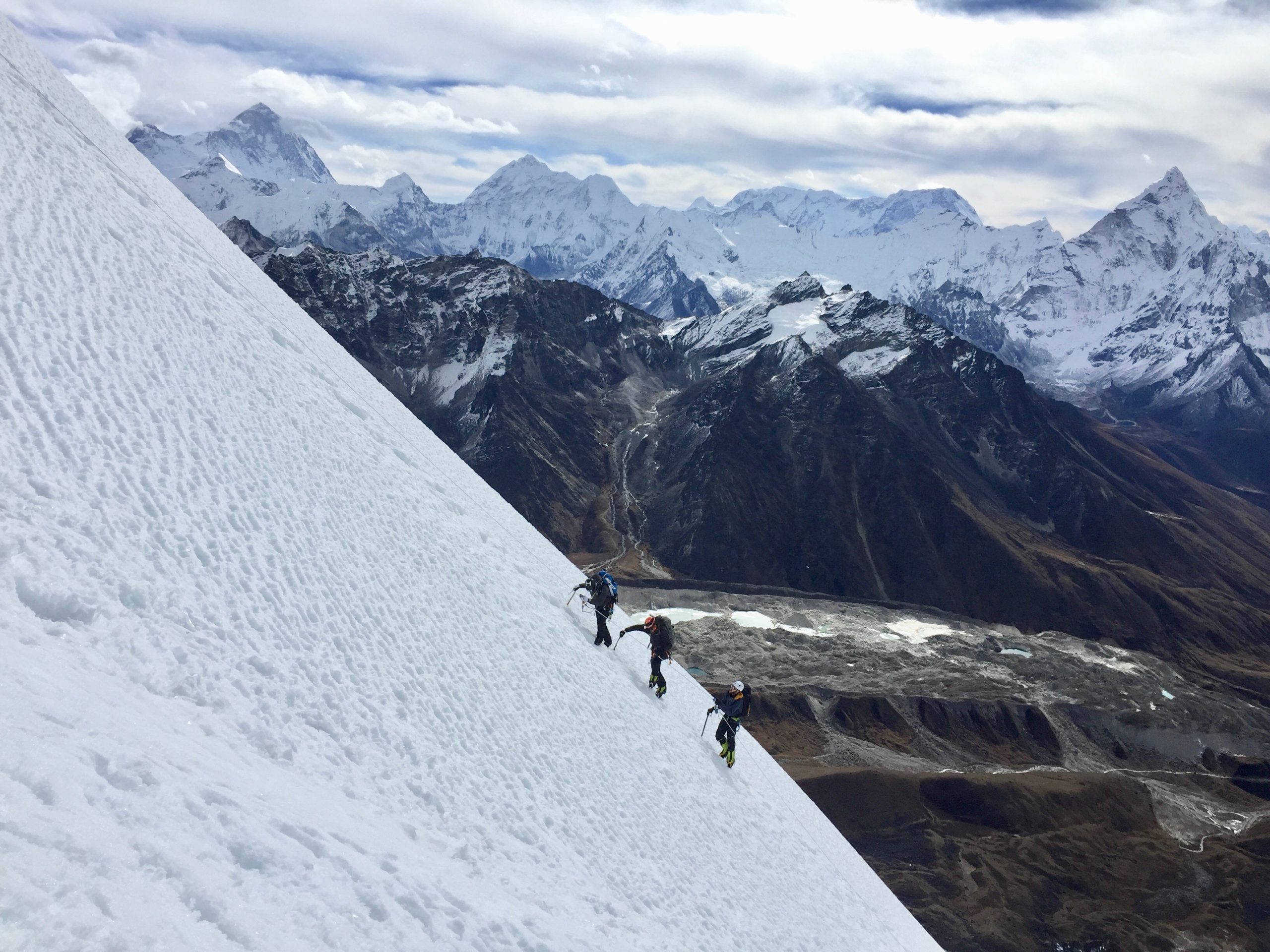
Testimonials
As expected you run a first class show from start to finish… I look forward to the next adventure.Len F, USA
An incredible experience from start to finish. I can’t say enough what a difference it makes to have a great guide who cares so much about the whole experience and a great time to make the journey so special. I hope this is the first of many climbs with CTSS for me.Kevin A, USA
I cannot even put into words how incredible that trip was for me – you truly run everything top notch and it shows in every single part of the trip. Your patience in teaching/coaching in a way that I didn’t feel intimidated by was amazing and so so appreciated. I am in awe of this whole experienceJulie M, USA
